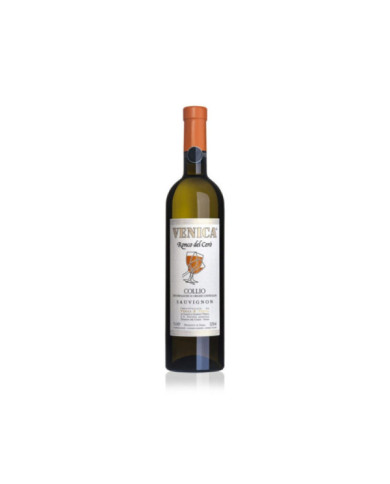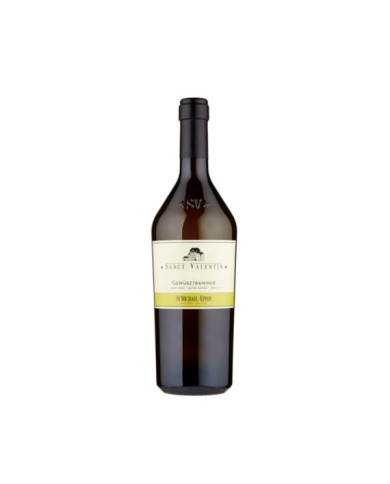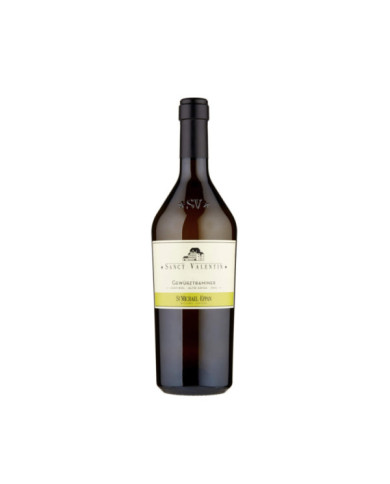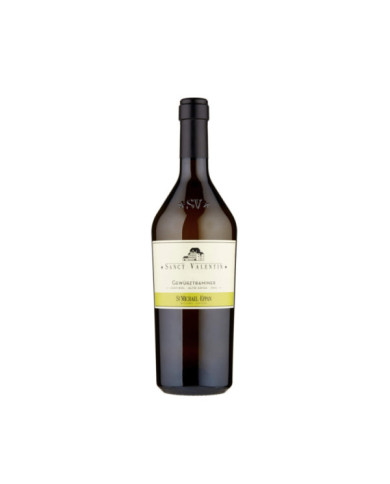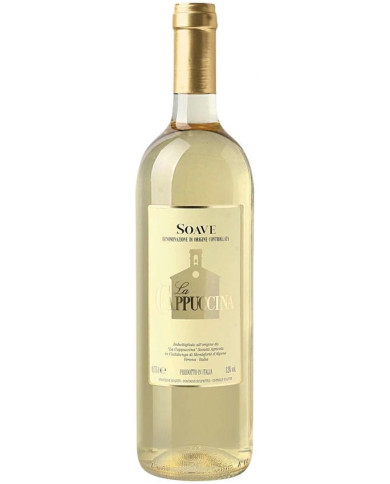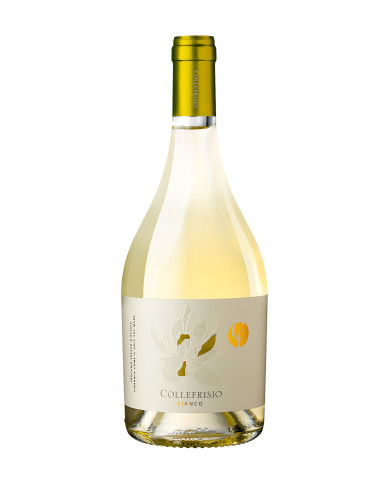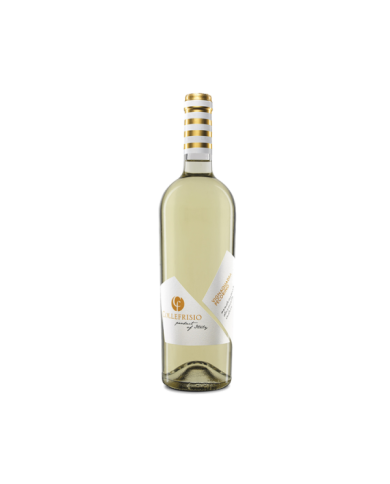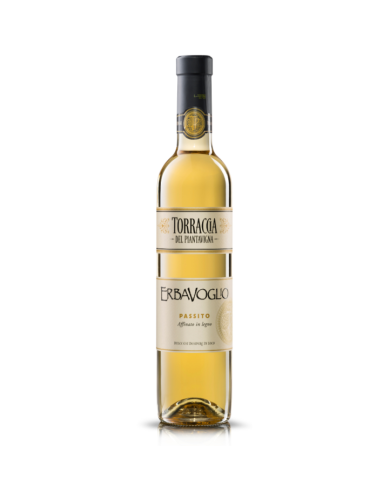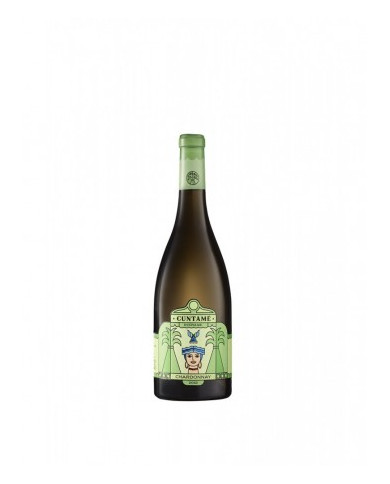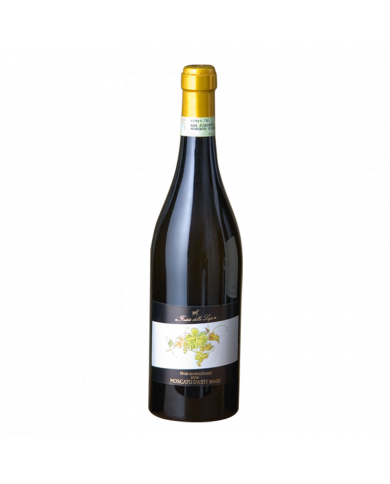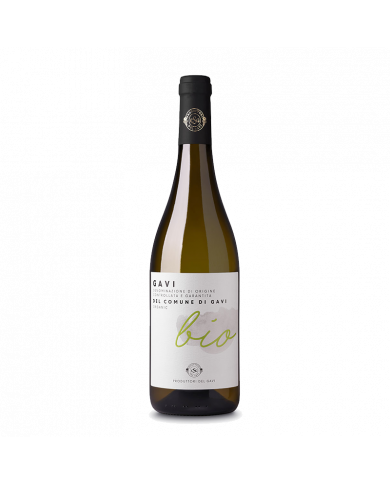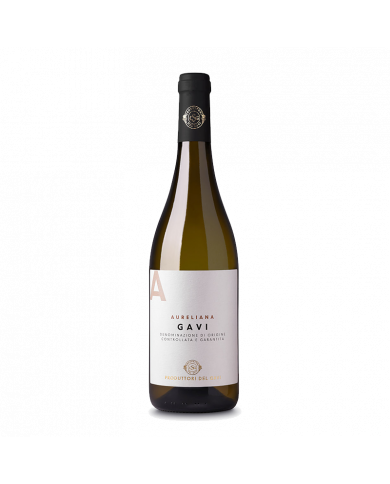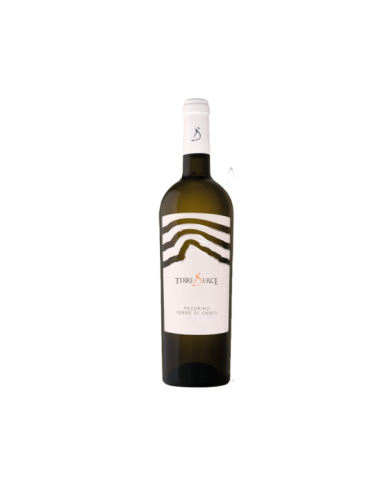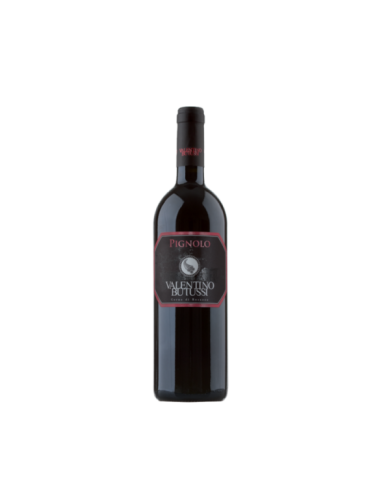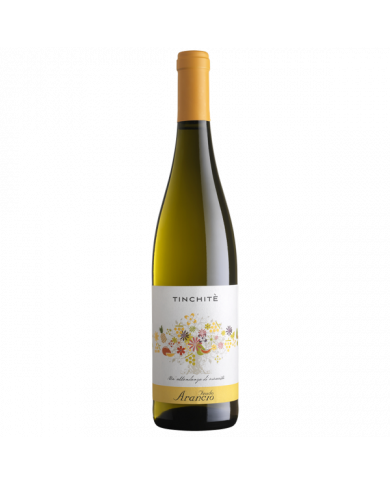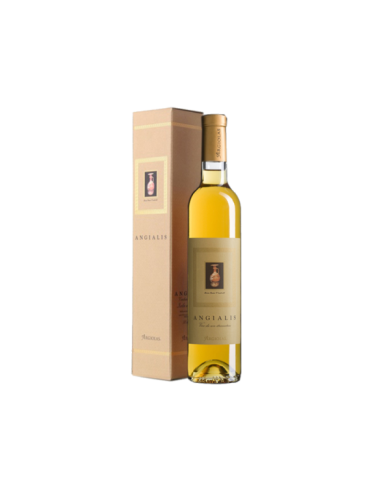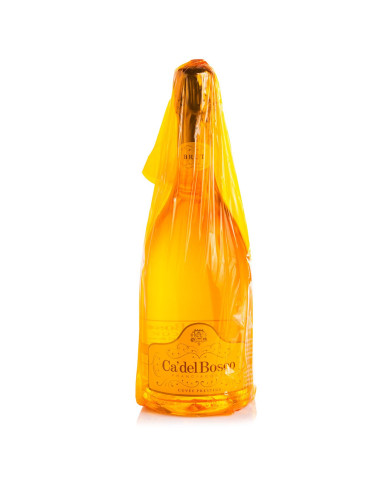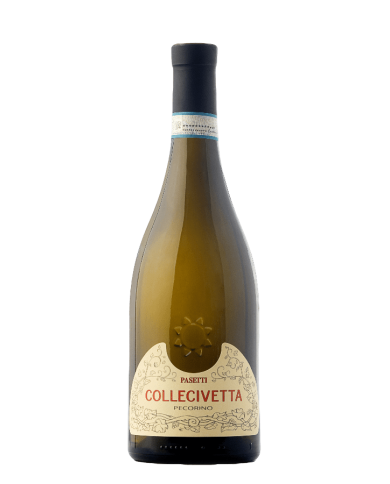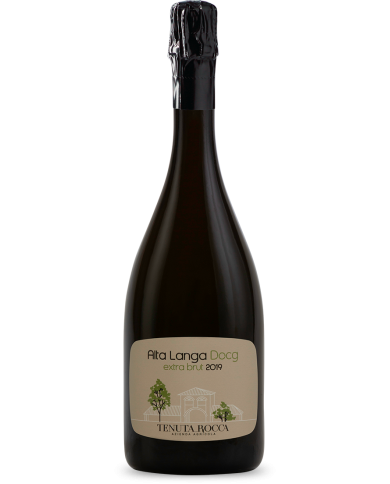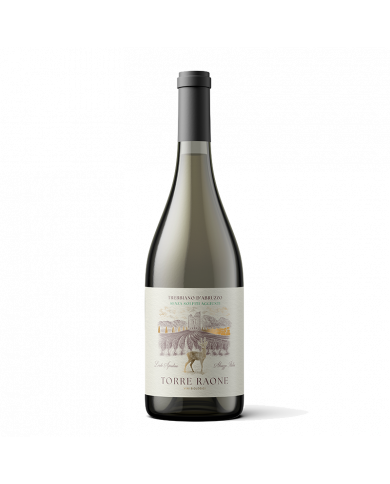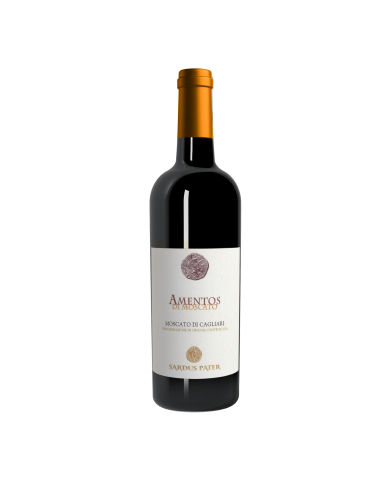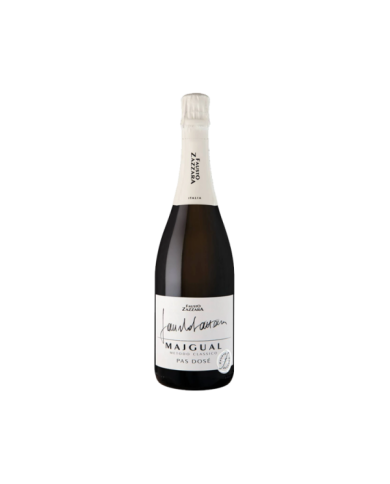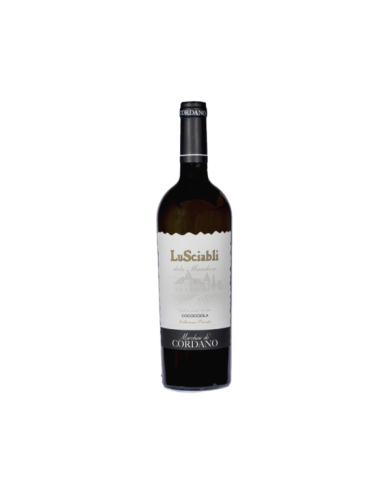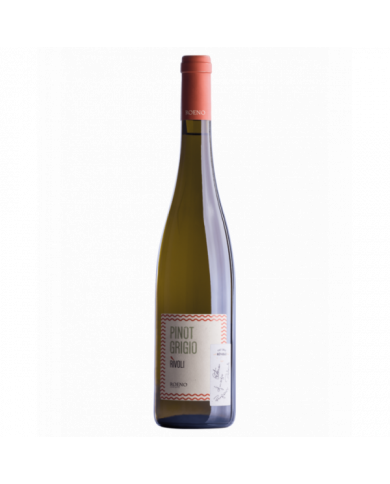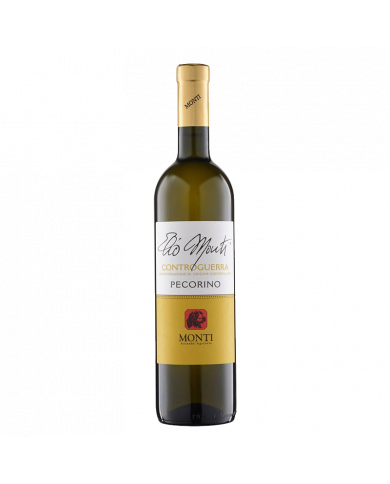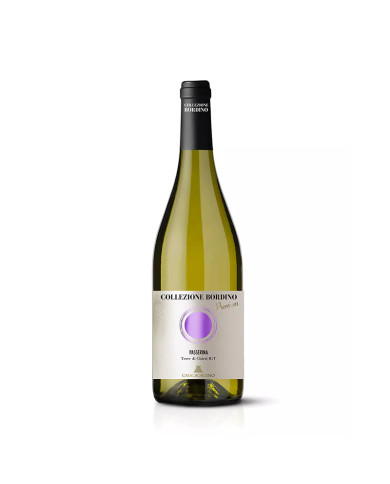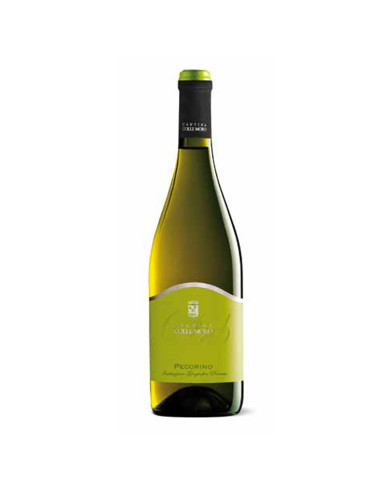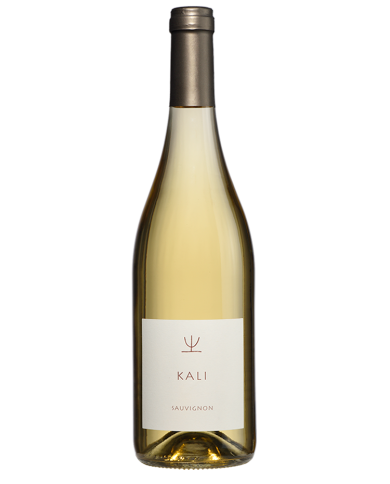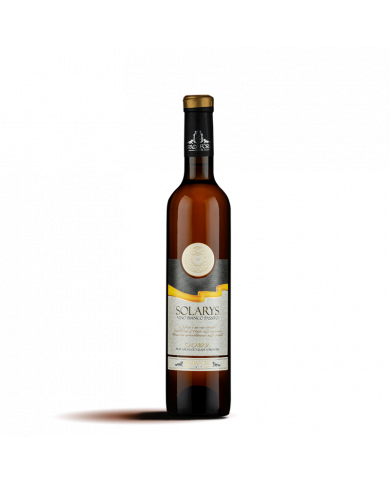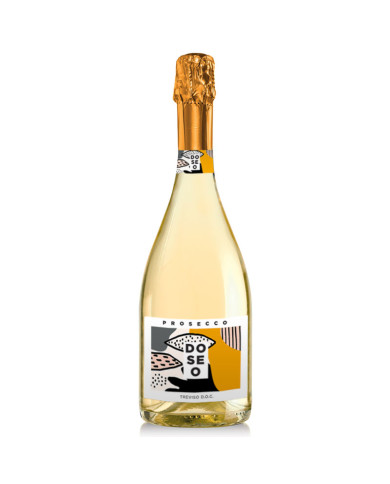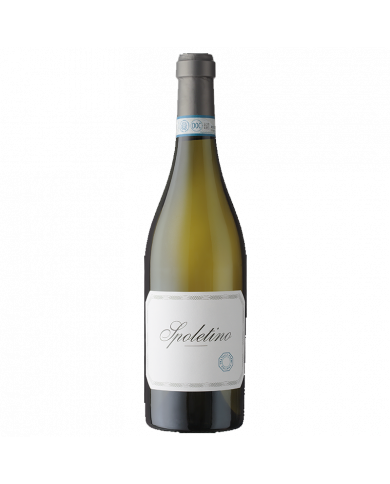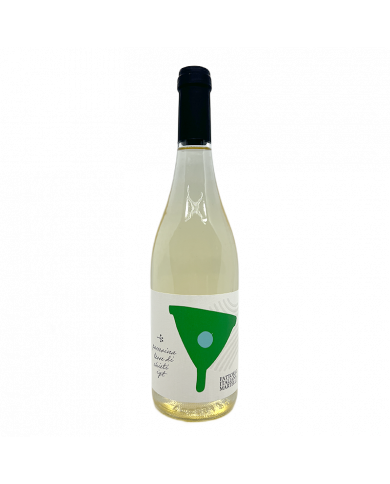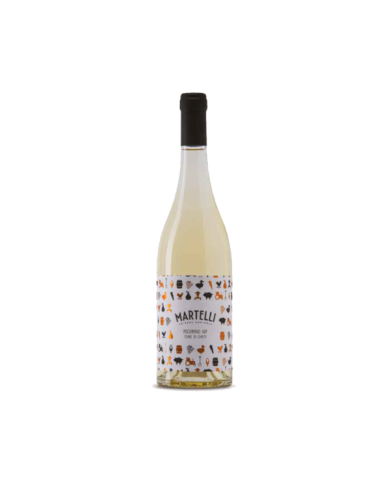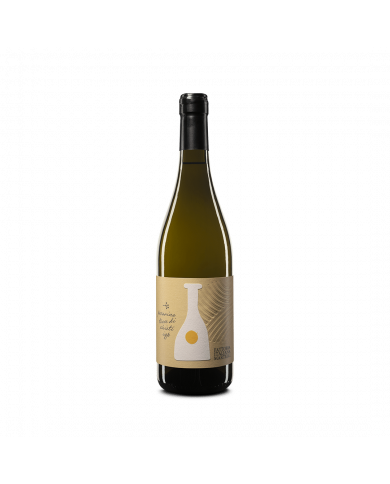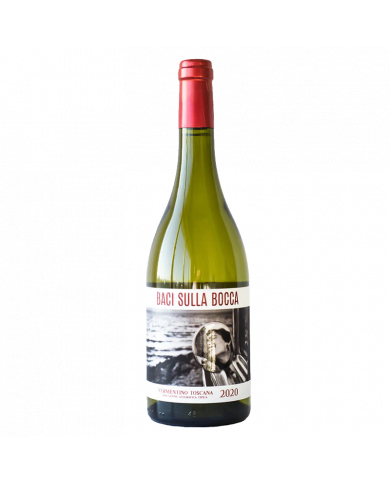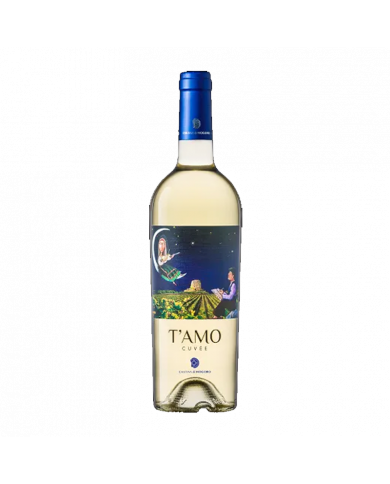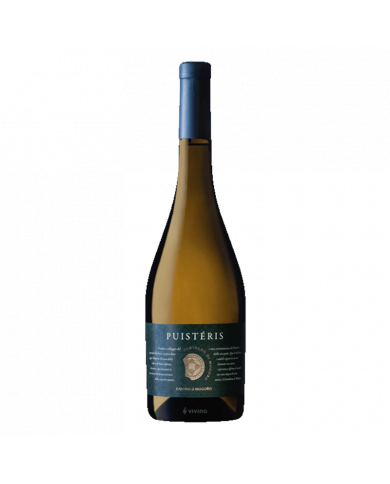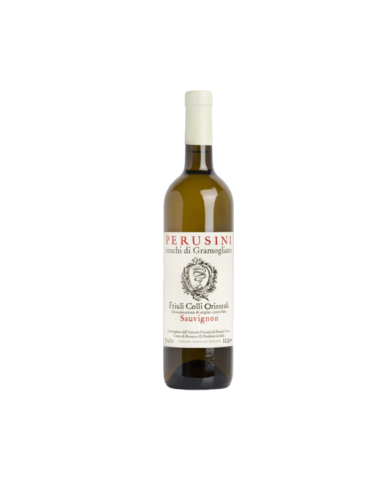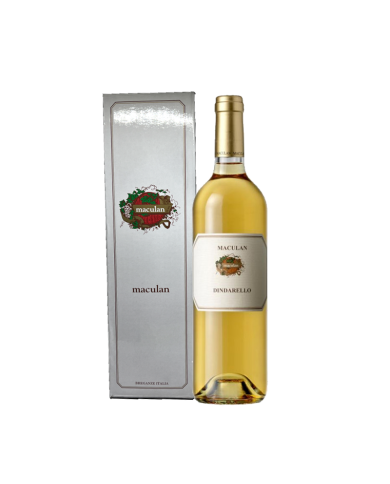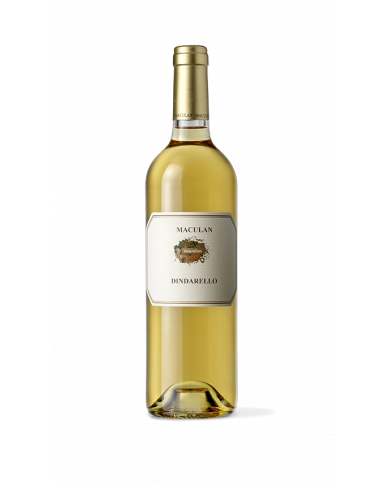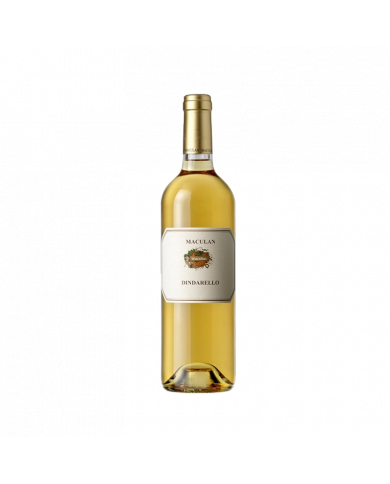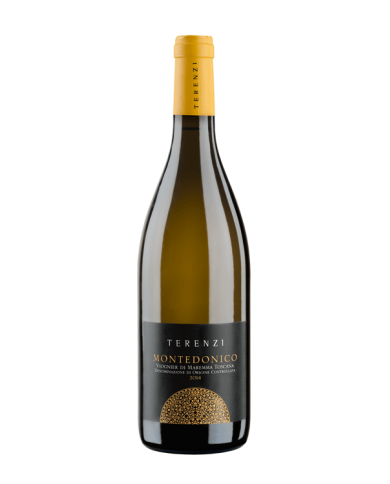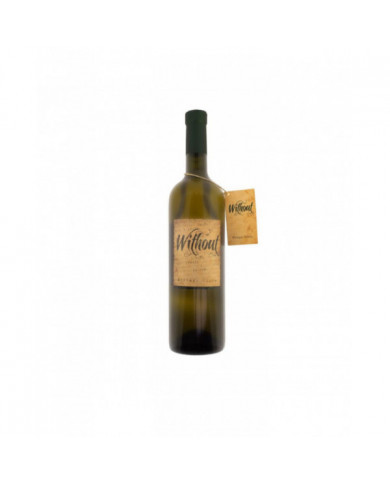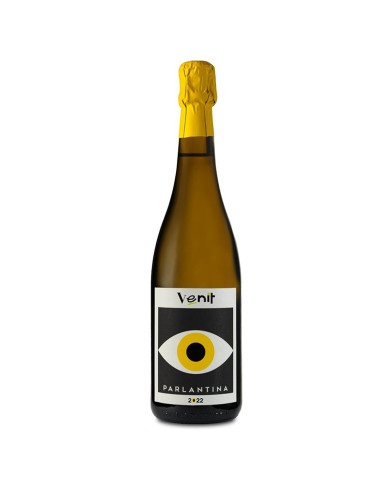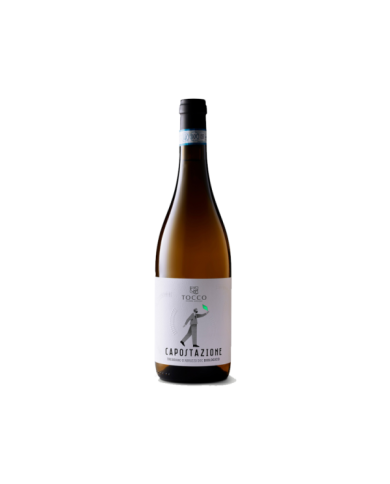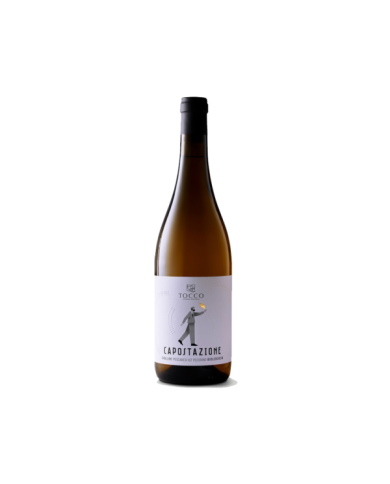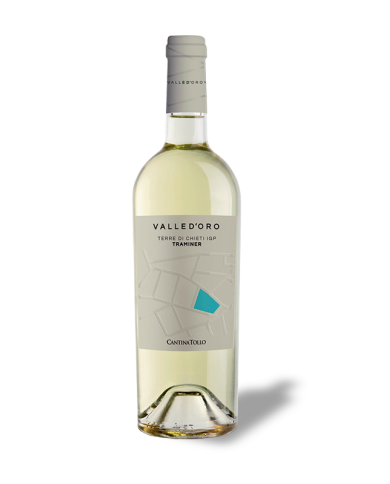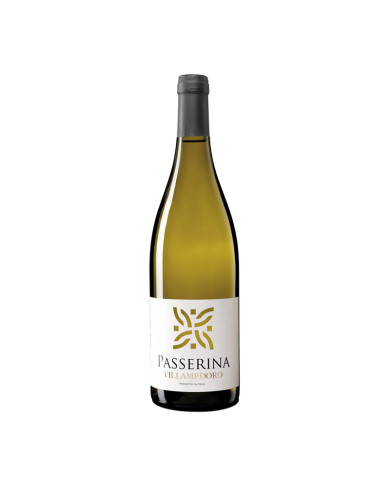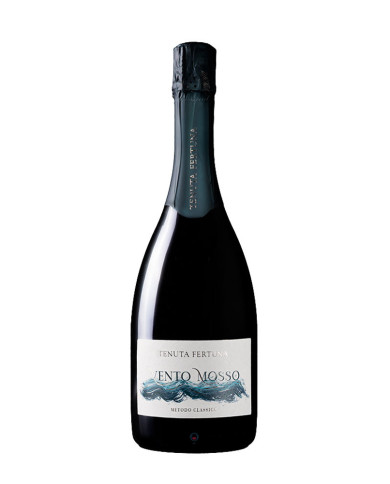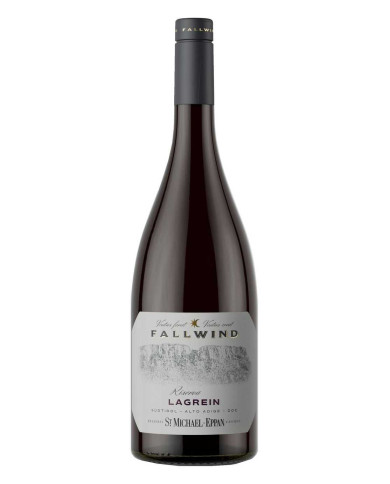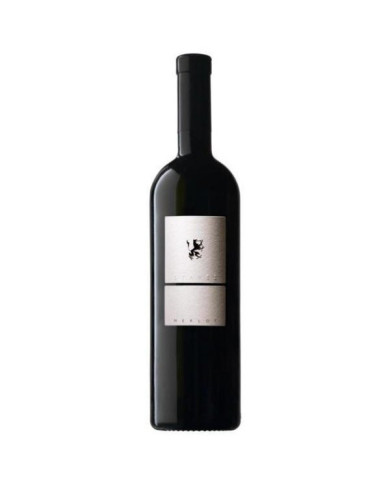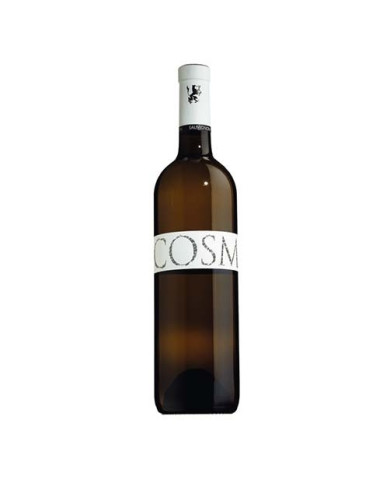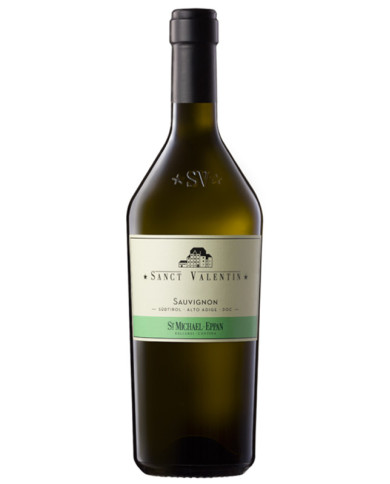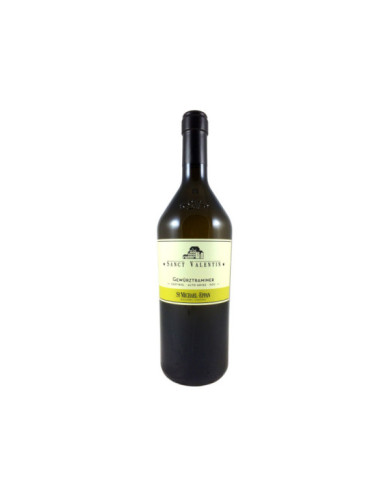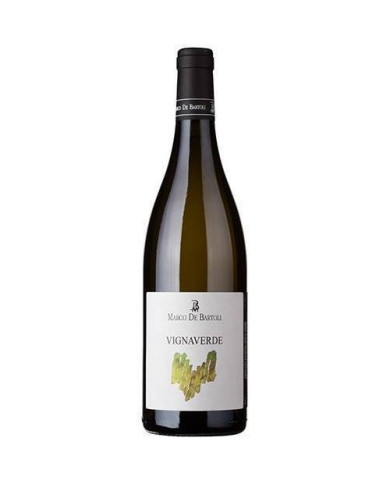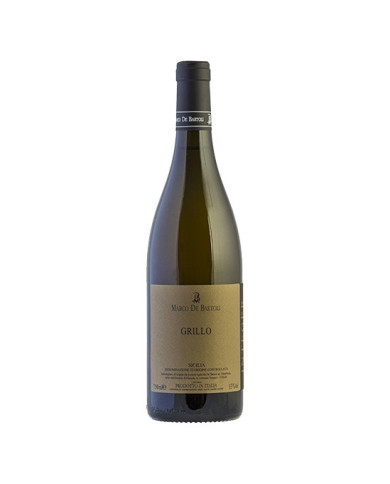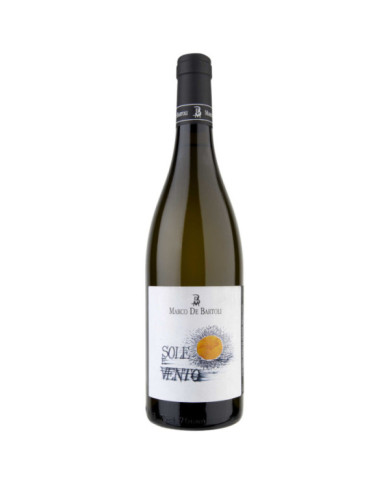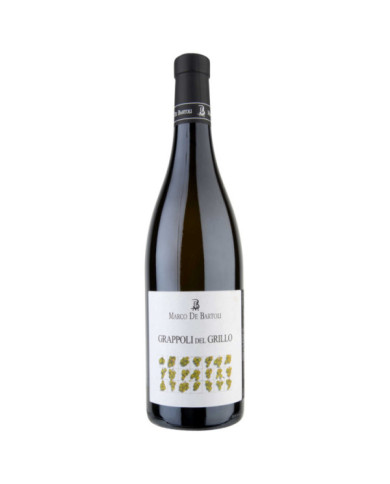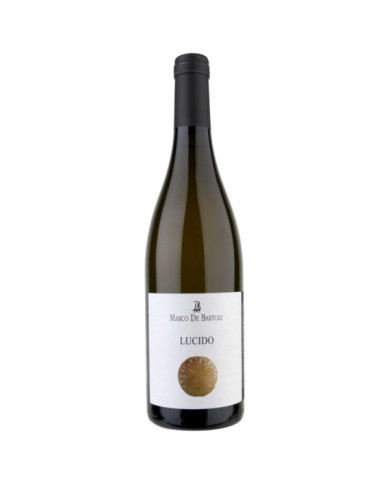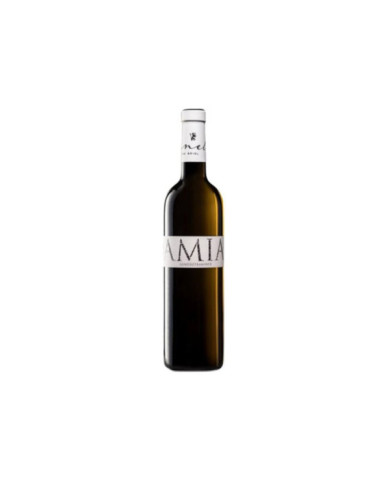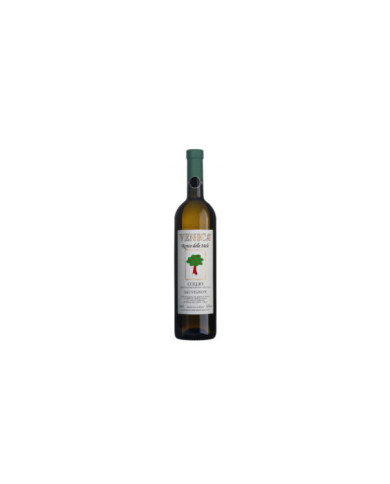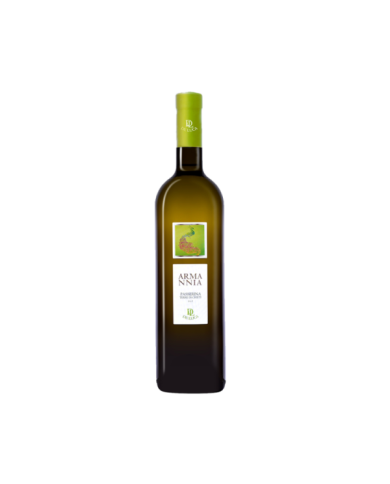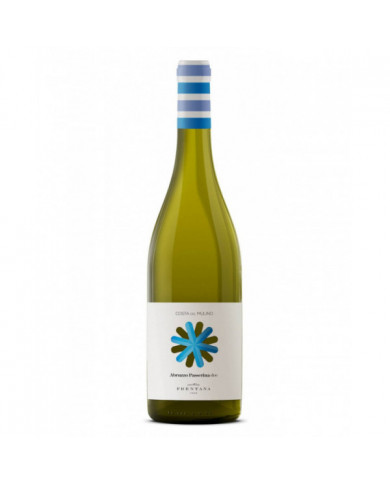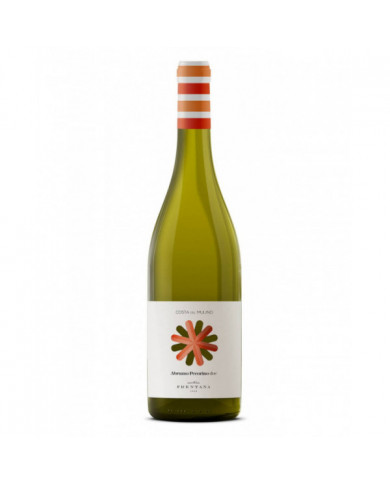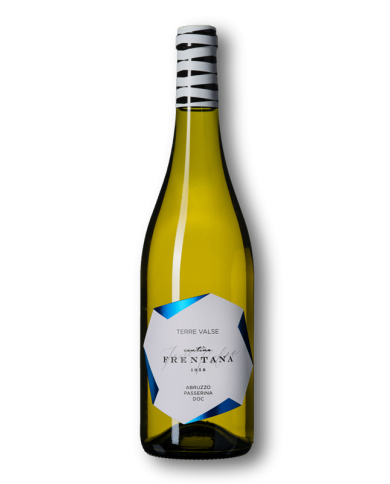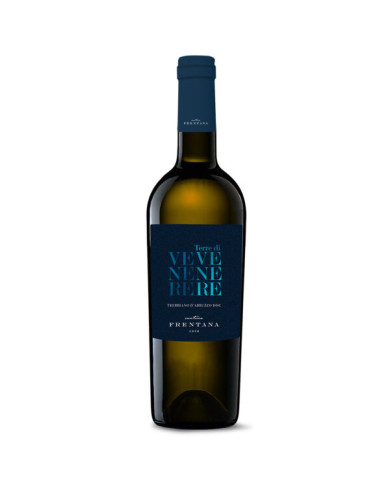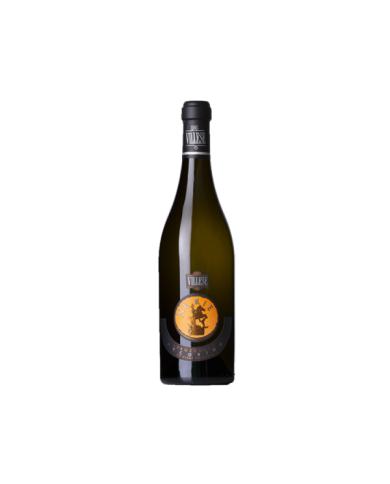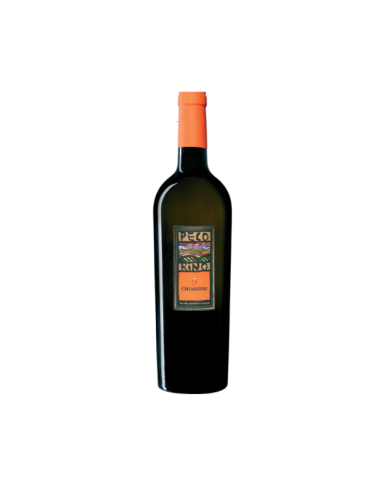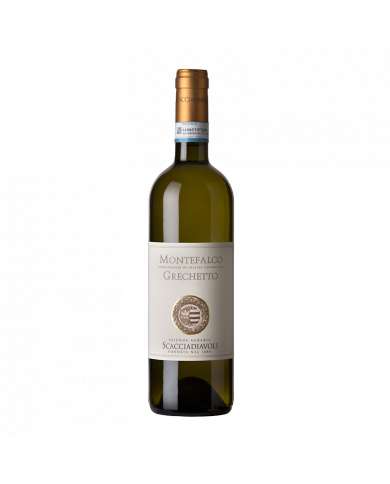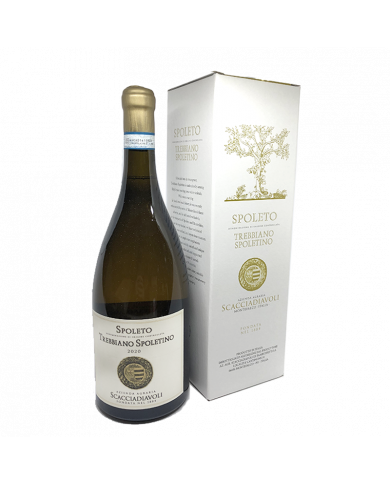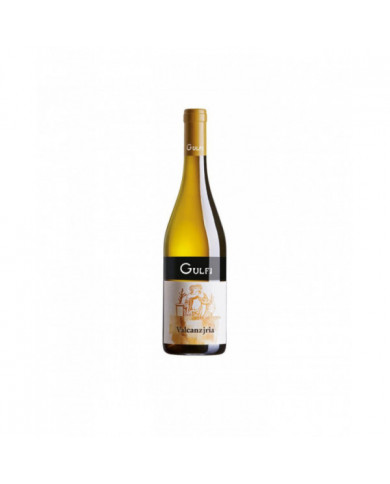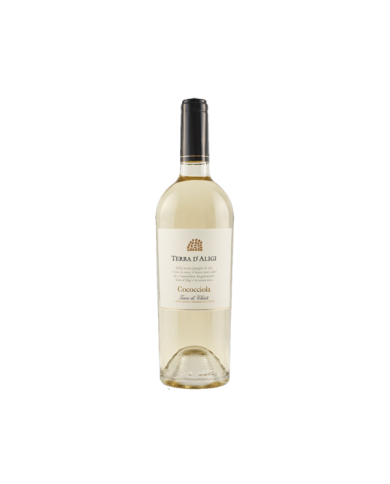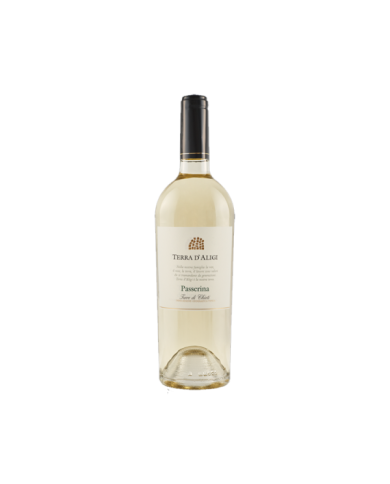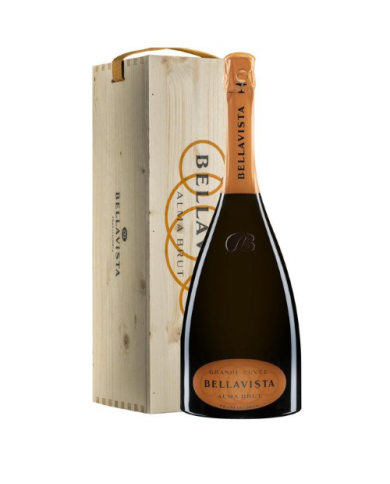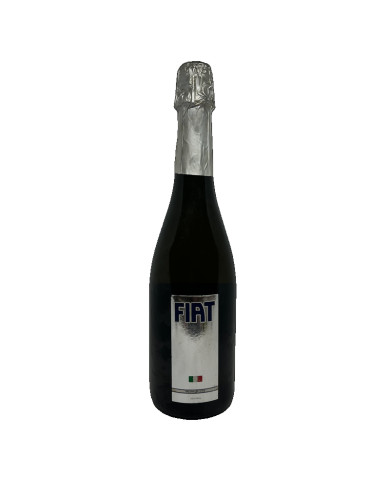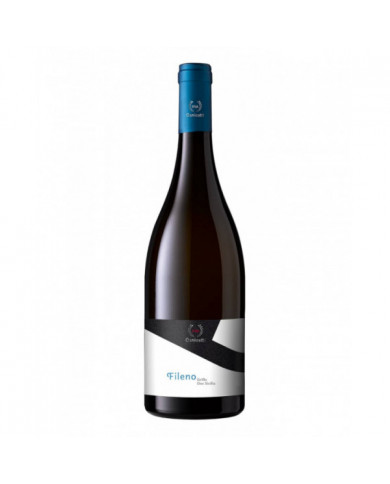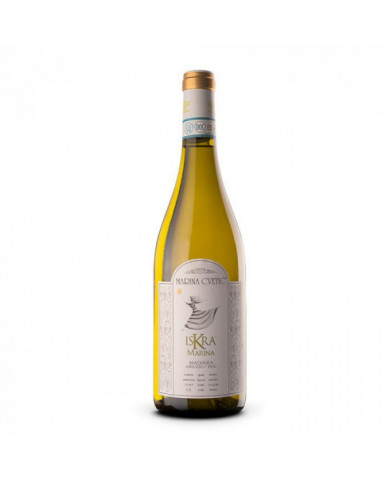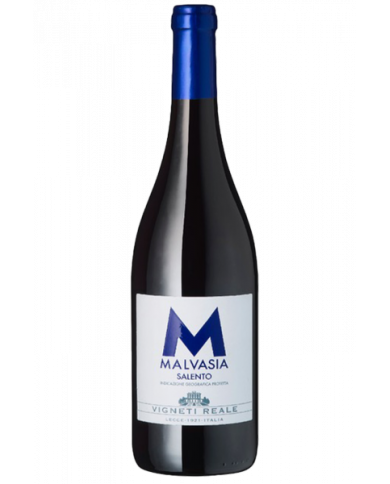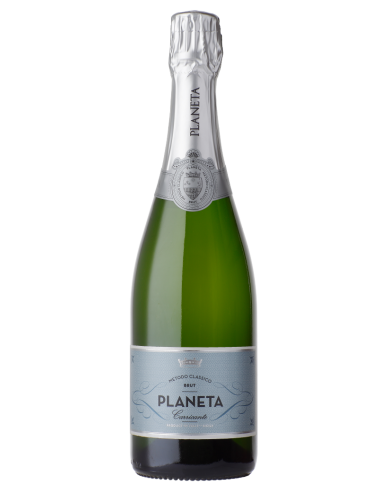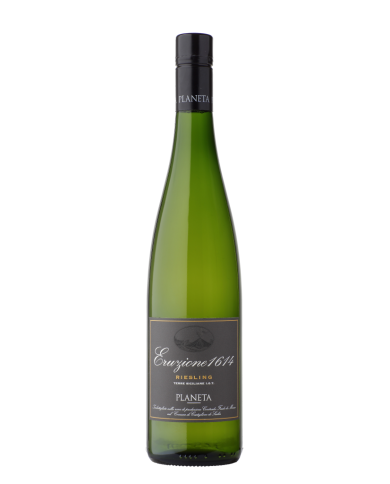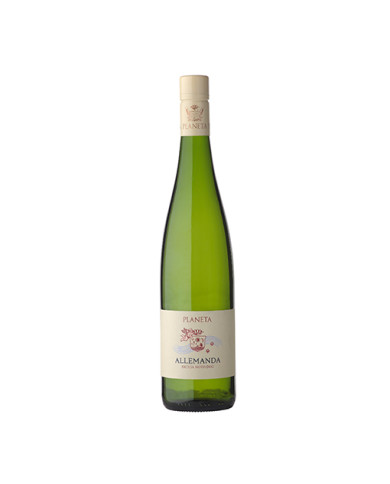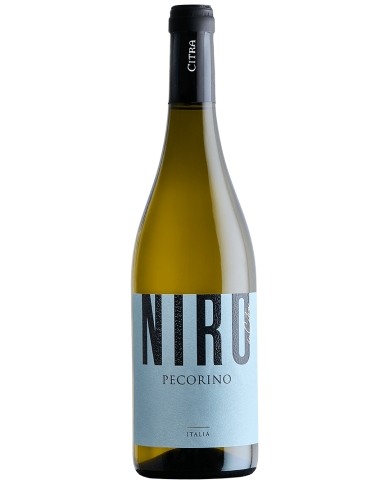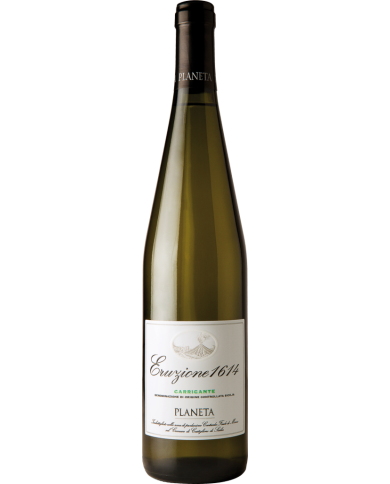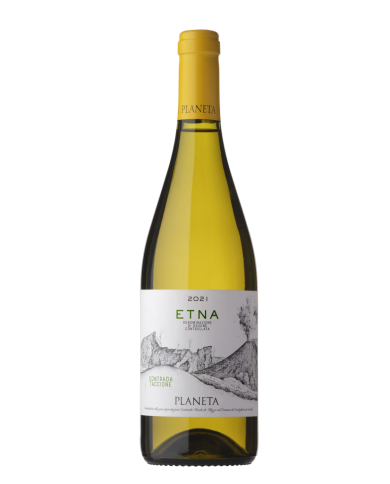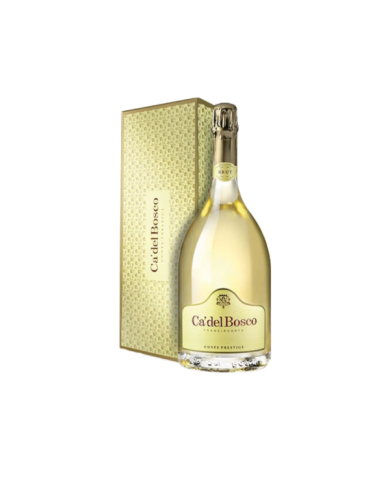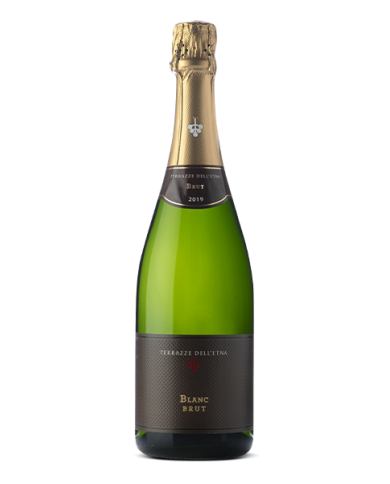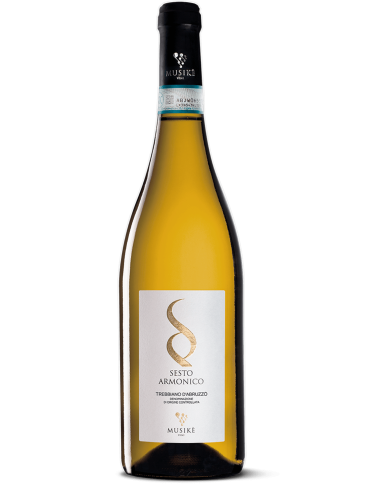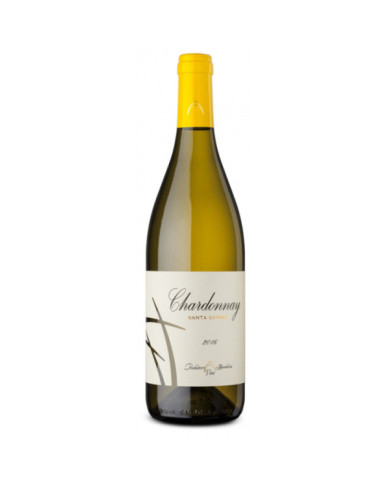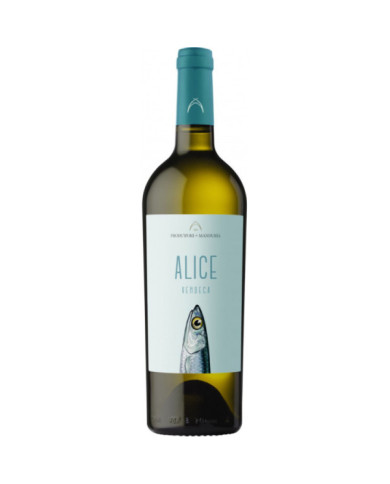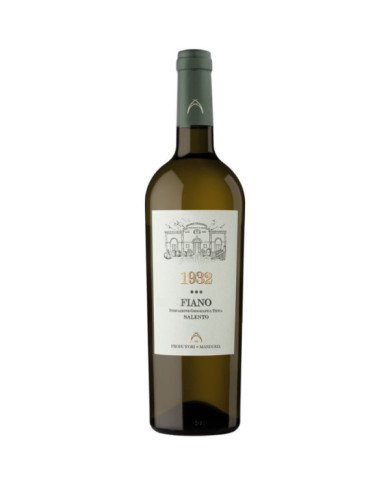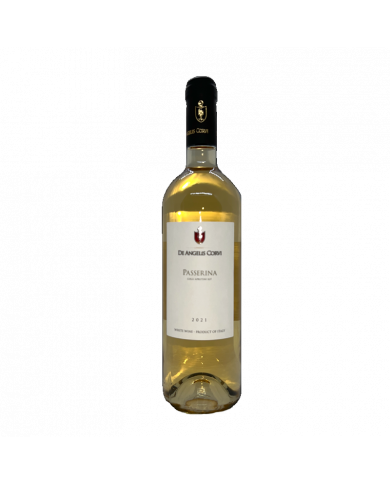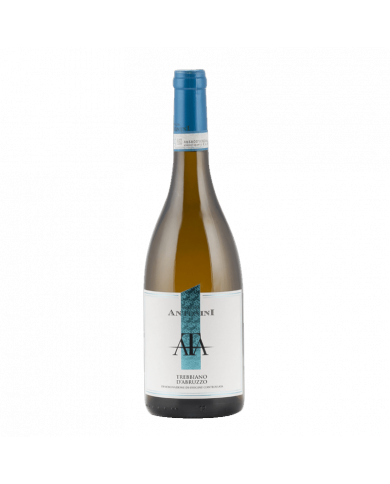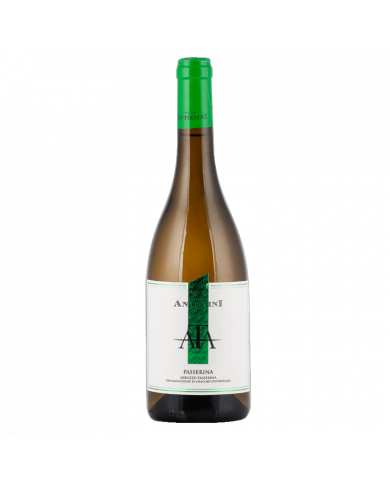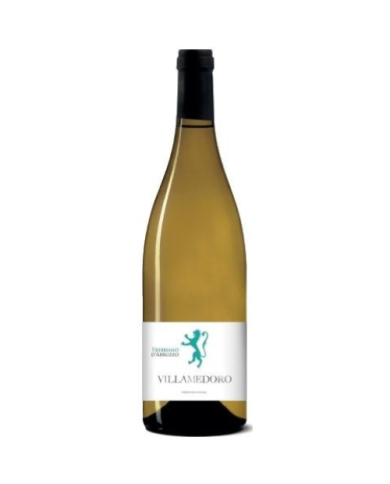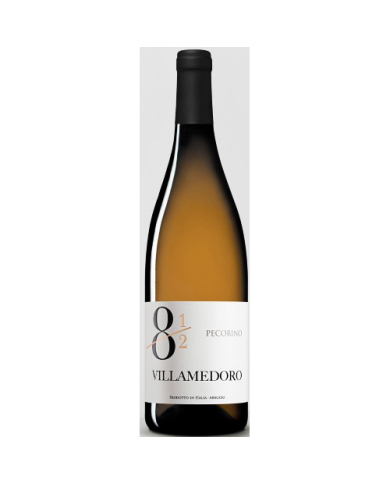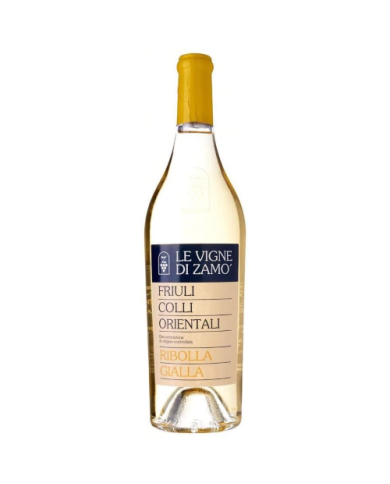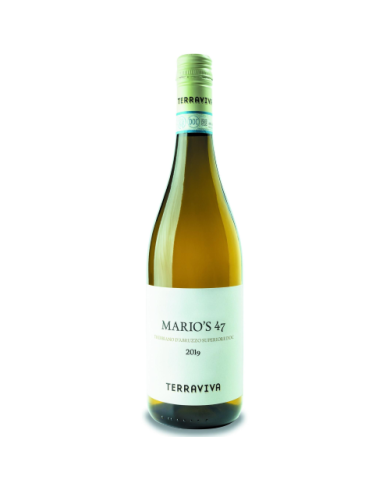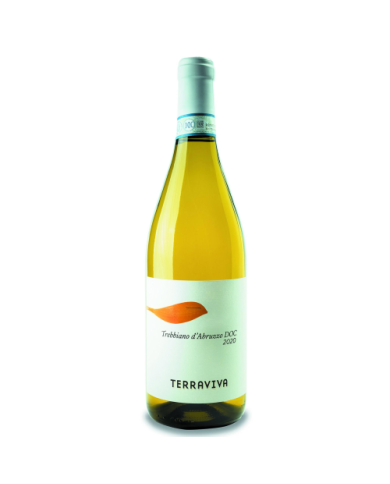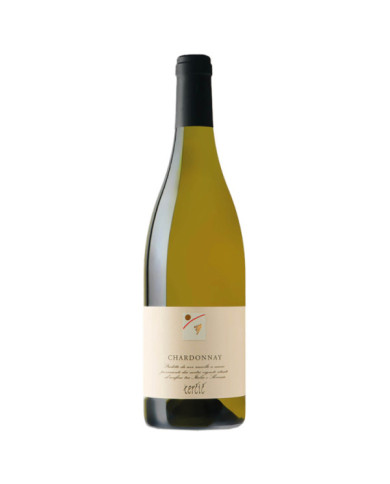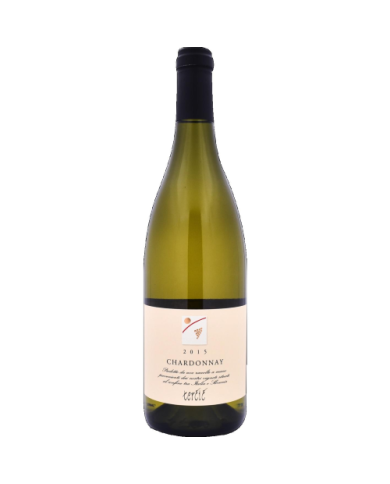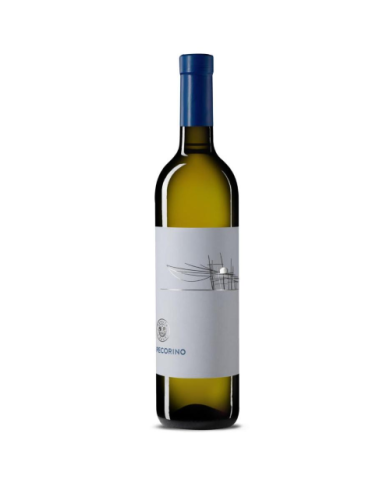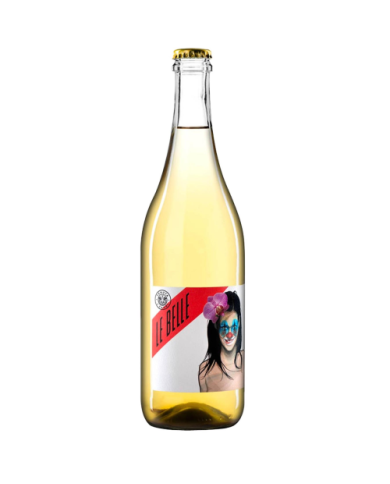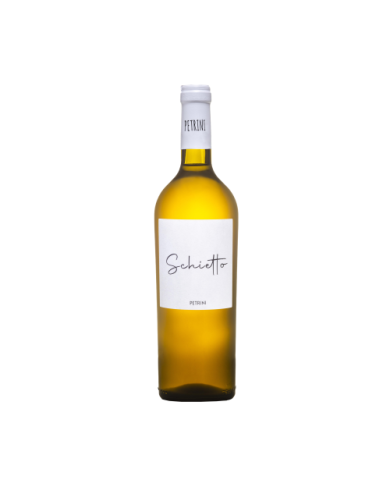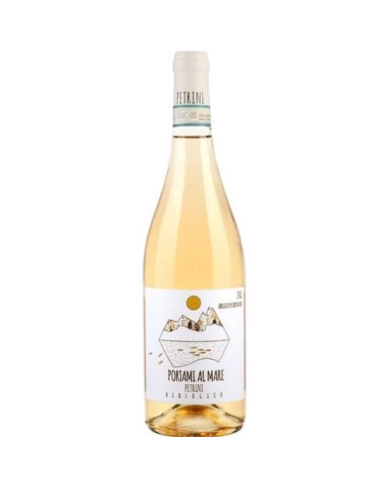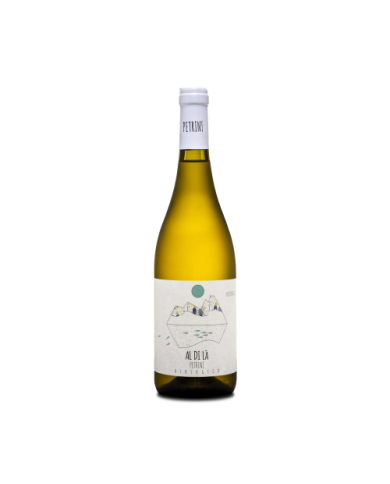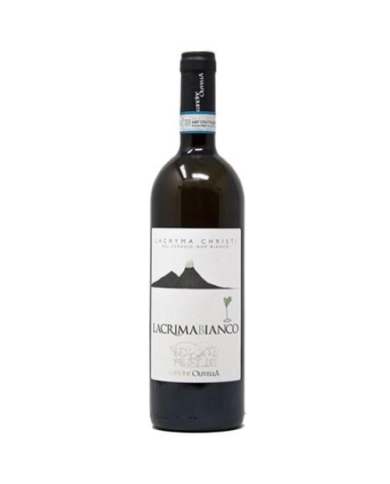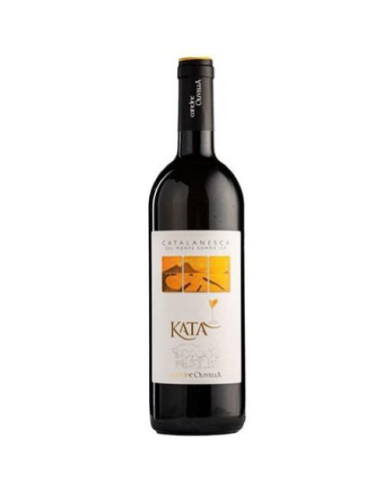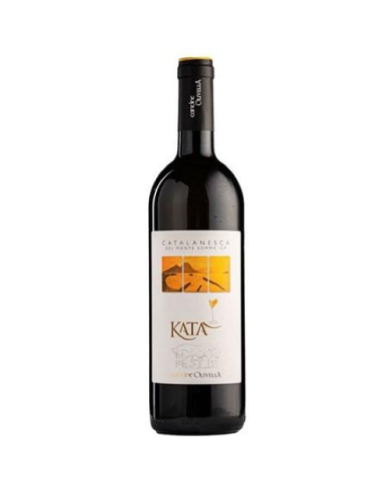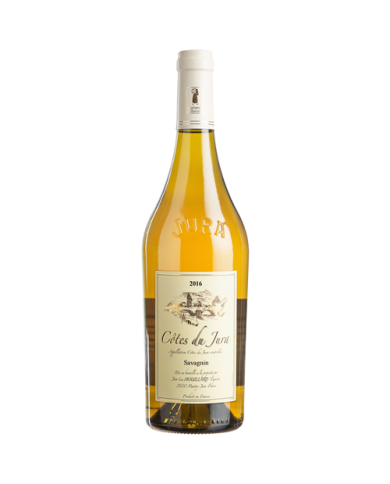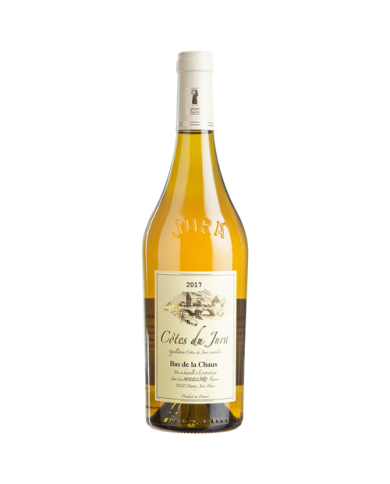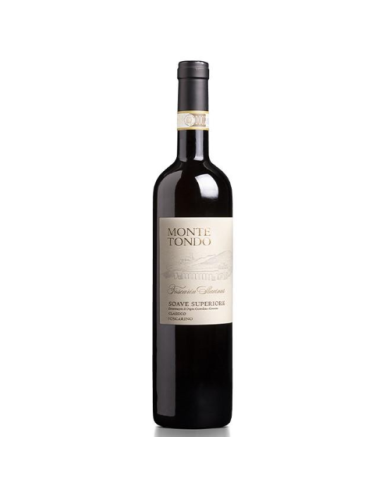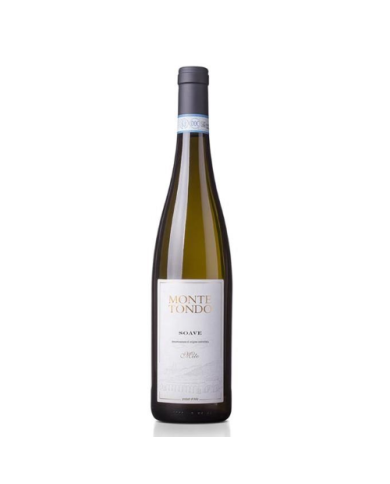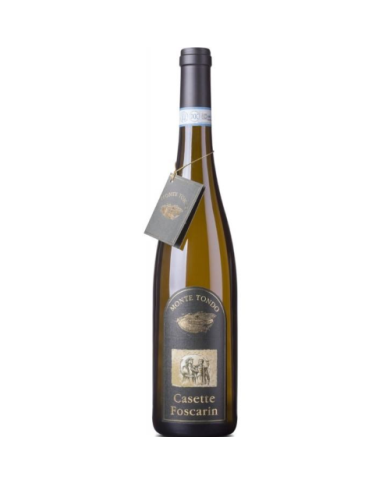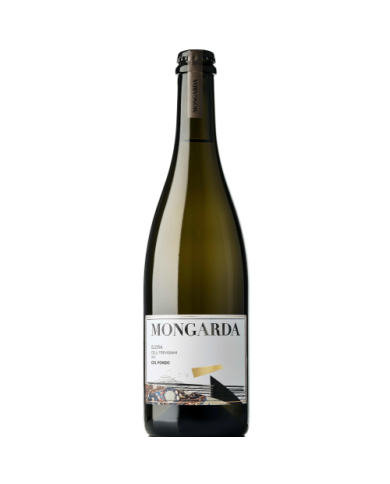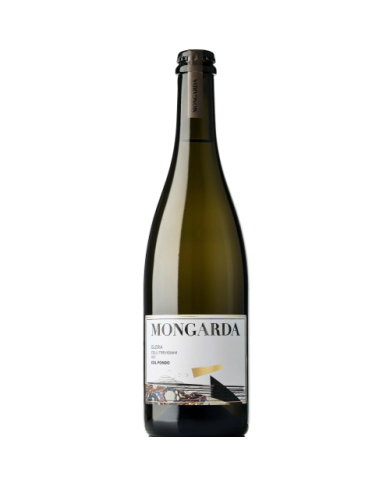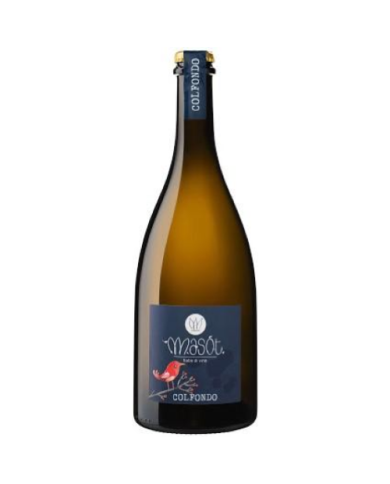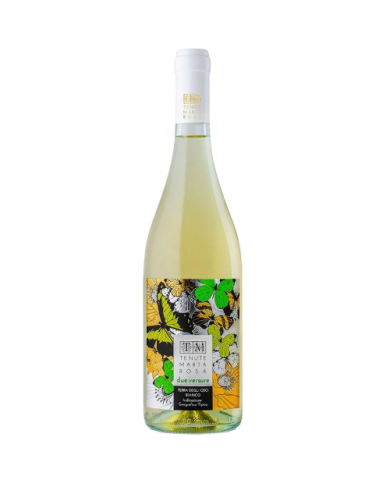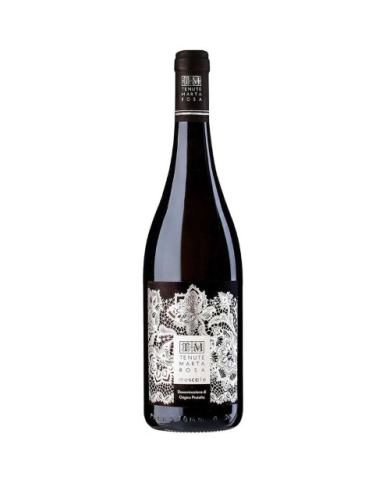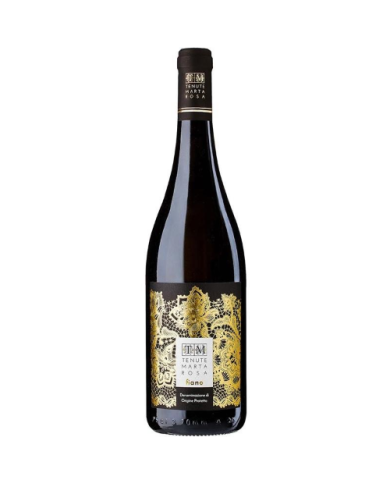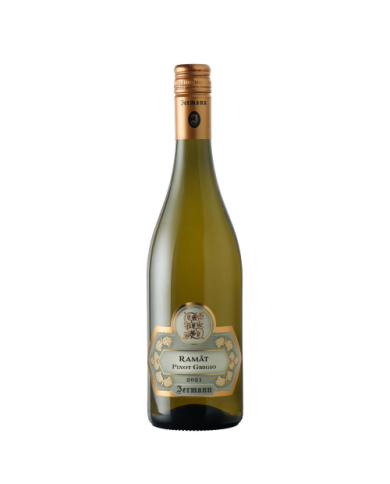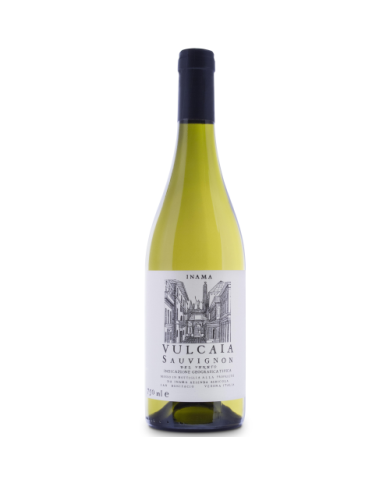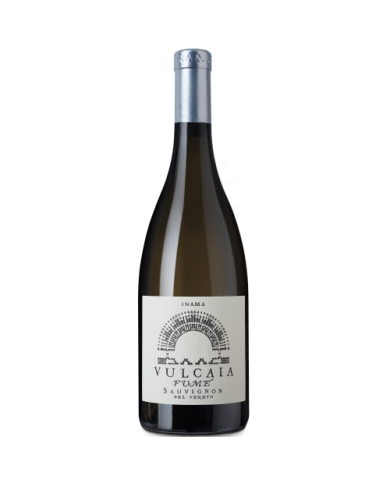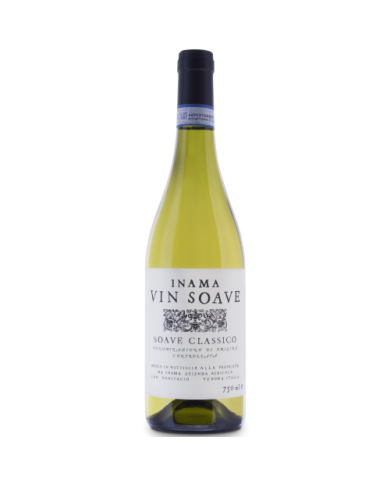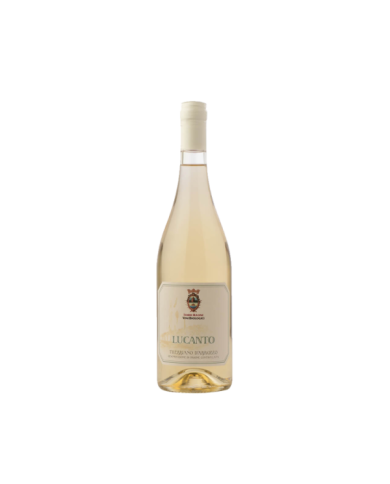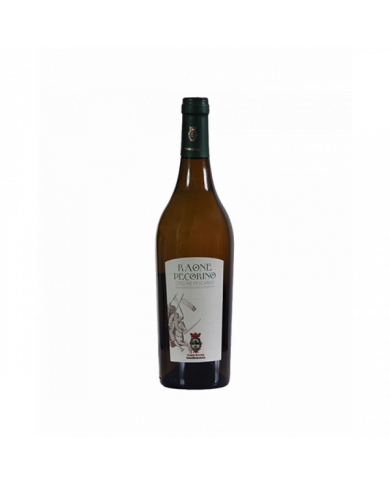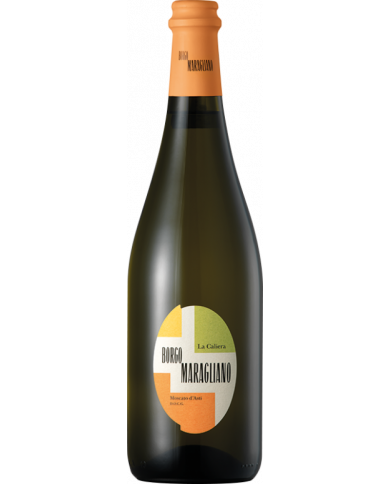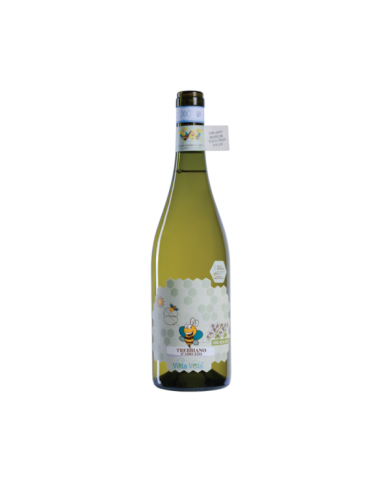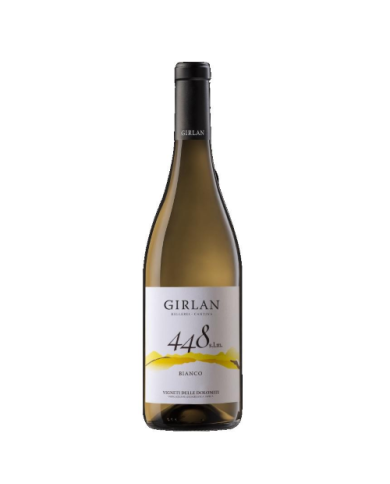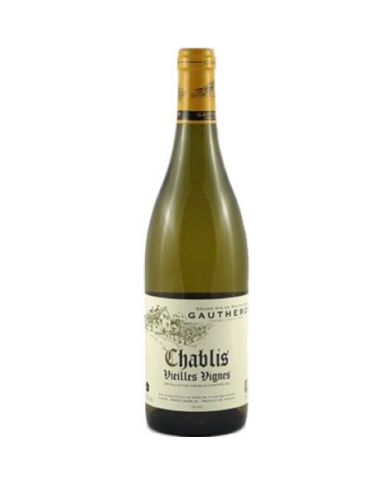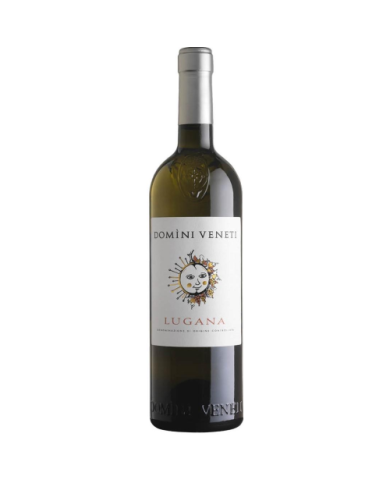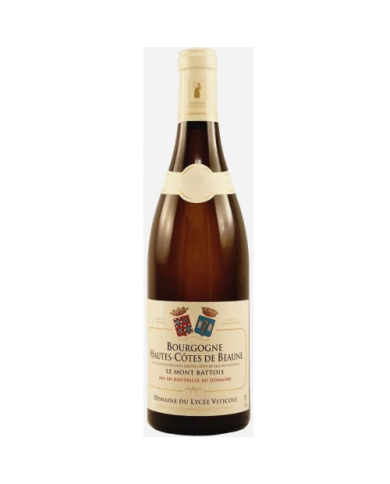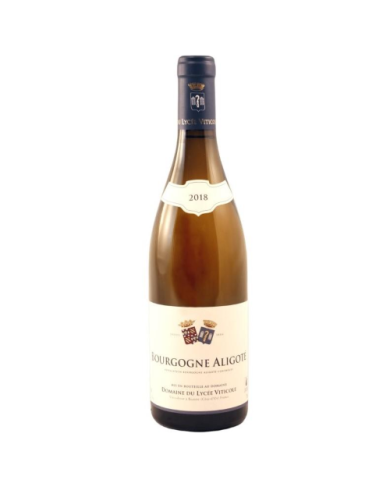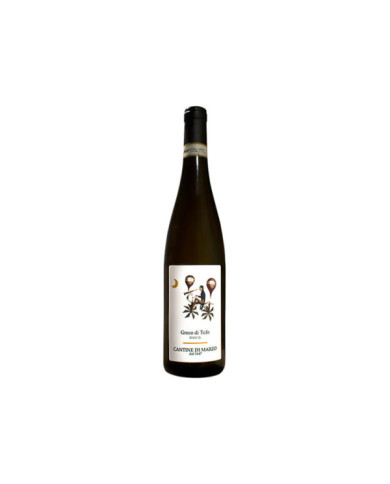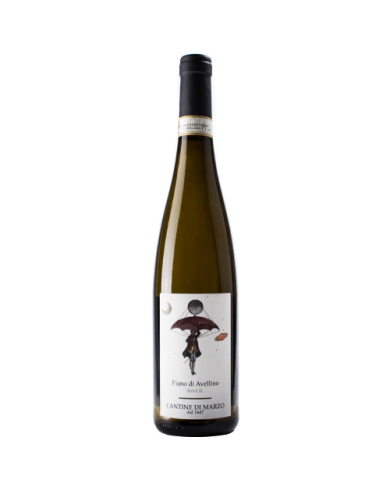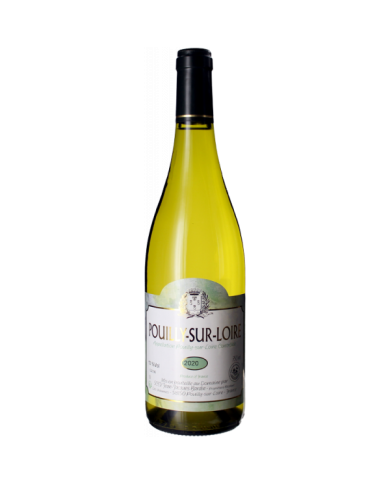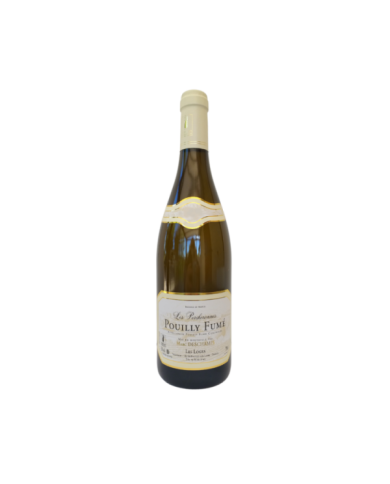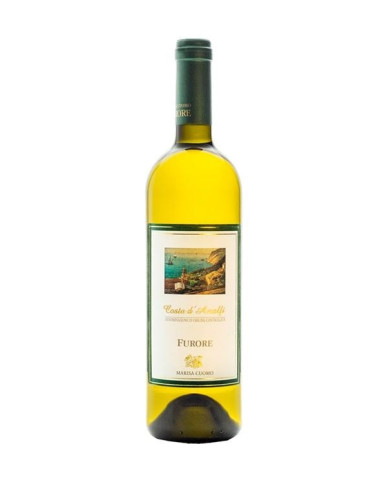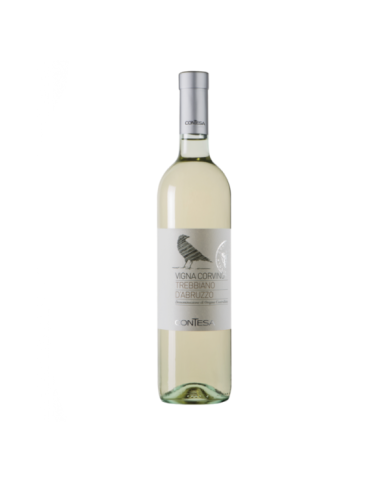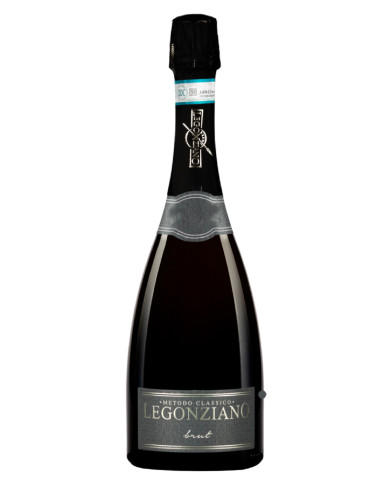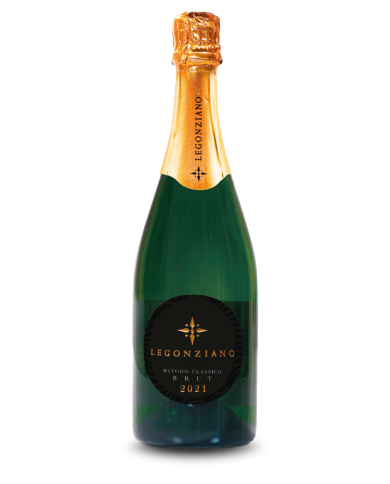GRAPES : 100% Pecorino HARVEST : end of September VINIFICATION : Maceration at low temperature after destemming of the grapes and temperature controlled alcoholic fermentation in steel tanks. TASTING : To be accompanied with Pasta, Vegetarian, Appetizers and snacks, Lean fish, Salami.
SOFT STRAW YELLOW COLOR WITH GREEN REFLECTIONS. THE NOSE EMERGES NOTES OF PEACH, BANANA AND PEAR. FINE AND PERSISTENT WITH EXCELLENT ACID SHOULDER. FRESH, STRUCTURED AND SOFT ON THE PALATE. RECOMMENDED WITH APPETIZERS, SOUPS AND LIGHT FIRST COURSES, FISH-BASED SECONDS, WHITE MEAT AND FRESH AND AGED CHEESES.
INTENSE STRAW YELLOW COLOUR. NOSE MARKED BY PLEASANTLY BUTTERY NOTES, THEN PEAR, PEACH, MANDARIN AND FLINT. DELICATE BUT AT THE SAME TIME EXTREMELY INTENSE PERFUME. ON THE PALATE IT IS FRESH, POWERFUL, LONG AND PERSISTENT. APPETIZERS, SOUPS AND LIGHT FIRST COURSES, WHITE AND RED MEAT, FISH, FRESH AND MEDIUM-MATURED CHEESES.
VERY INTENSE STRAW YELLOW COLOUR. NOSE MARKED BY HINTS OF FLINTSTONE, VANILLA WITH TOASTED AND DELICATELY SPICY HINTS. IN THE MOUTH IT IS ELEGANT, SOFT AND LONG PERSISTENT WITH A GOOD SHOULDER. APPETIZERS AND LIGHT FIRST COURSES, WHITE MEAT AND FISH SECONDS, FRESH AND AGED CHEESES.
Color : intense straw yellow. Bouquet : fresh fruity notes. Taste : almond notes with a finish of acidulous and savory and pleasantly fruity veins. PAIRING ┬Ę Fresh aperitifs, sushi, appetizers and fish-based meals, white meats and first courses with rich dressing.
PIGNOLO BUTUSSI FRIULI VENEZIA GIULIA Grape variety: pure Pignolo Winy, tannic taste, reminiscent of raspberry. It is a wine to be discovered. Wine for meat dishes of Friulian cuisine, especially it prefers the ci├Ār in padiele (beef stew). Serving temperature: 16 ŌĆō 18┬░ C
PIGNOLO BUTUSSI FRIULI VENEZIA GIULIA Grape variety: pure Pignolo Winy, tannic taste, reminiscent of raspberry. It is a wine to be discovered. Wine for meat dishes of Friulian cuisine, especially it prefers the ci├Ār in padiele (beef stew). Serving temperature: 16 ŌĆō 18┬░ C
Tinchit├©: an abundance of liveliness. Wine obtained from Grillo grapes grown in our wineries located in the south-east of Sicily, in the province of Ragusa, and in the west, in the province of Agrigento, where the different environmental conditions allow us to obtain grapes with different aromatic styles. In fact, if on the one hand the proximity to the sea of the vineyards cultivated at the Ragusa company and the loose and warm soils allow for more fruity and fragrant wines to be obtained, on the other, the more clayey and fertile soils of the company located near Agrigento they give the grapes more concentration, ripeness, richness and volume. From the union of these two different styles of wine, the richness and fruitiness of our slightly sparkling wine is born.
AROMATIC AND LAMINATED GRAPES
Angialis Isola dei Nuraghi Igt by Argiolas is a wine with an intense straw yellow color. On the nose they result in very intense primary aromas, markedly Mediterranean. Terpenic characters typical of Nasco.
CUV├ēE PRESTIGE Identity. A virtue that is found in the etymology of an ancient word: idem, or to be the same. Cuv├®e Prestige, the essence of Franciacorta, in the Ca 'del Bosco style. A jewel born in 2007 from thirty years of experience. Only the best Chardonnay (75%), Pinot Nero (15%) and Pinot Bianco (10%) grapes from 134 vineyards, vinified separately and wisely blended with reserves of the most beautiful vintages (at least 20%) enter the magical rite of Cuv├®e Creation . It will take 28 months of aging on the lees before this wine is ready to express all its richness and identity. A classic Franciacorta, balanced, pleasantly fresh and crunchy. Perfect for any occasion.
A ŌĆ£mustŌĆØ from the Pasetti company. Authentic mirror of the strong Abruzzo tradition, which is expressed here in the excellence of one of its native vines. This young pecorino in purity today represents a third of the company's production.
Deep straw yellow colour. The aromas, on the nose, unfold on a carpet composed of dried fruit and lightly toasted bread, wild flowers. In the mouth the entrance is full and rich
Golden yellow in color. The nose is elegant, intense and quite complex. Fruity and oral, herbaceous. On the palate it is fresh with the right flavor. Balanced and intense. The bouquet is reminiscent of orange blossom, jasmine, yellow peach, pineapple and a hint of candied citrus and notes of dry pastic ceria. Vinification : Manual harvesting of grapes in small boxes. Cold pressing in an inert environment, static decantation of the must with controlled fermentation. Anament in terracotta amphorae for 12 months. The cococciola is a grape that allows to obtain a wine of structure and longevity. The amphora does not yield any aroma, enhances the varietals of the grapes used and allows, thanks to the porosity of the clay, a good micro-genesis.
Rìvoli, from the name of the locality of choice. A Pinot Grigio of decided freshness, rich in facets, with a marked persistence and intensity.
A small and delicately pale grape, Pecorino is happy from the higher altitudes to the foothills to the coast, and thrives in Abruzzo (though you'll also find it in the Marche, Umbria, Liguria and Tuscany). The grape itself has an exceptionally high sugar content and tends to reflect the terroir without reserve: it is both sensitive and expressive, not unlike Pinot Noir, so it is a grape for a patient and passionate winemaker. Another nice thing about Pecorino - especially for white wine lovers - is the complexity you can find in a relatively young and affordable bottle. In a similarly priced Pecorino, you will get much more than a two-dimensional crunchy Pinot Grigio or a slate Sauvignon Blanc you get character, evident terroir, a richer aromatic profile than what often accompanies "fresh" white wines - notes of fruits of forest, flowers, dried herbs, minerality, all balanced by an acid freshness and a slightly heavier mouthfeel (thank you, sugar)
The name of this label recalls the one and only architect of its being, it is in fact the sun The name of this label recalls the one and only architect of its being, it is in fact the summer sun of our beloved land, the summer element of our beloved land, the element that determines its organoleptic characteristics. which determines its organoleptic characteristics. A raisin wine of great value, our Solarys bianco, a late harvest of grapes from A raisin wine of great value, our Solarys bianco, a late harvest of grapes from autochthonous vines, grown as saplings, left on the plant to dry gradually until the autochthonous vine , grown as saplings, left on the plant to dry gradually until reaching the natural sugar concentration; sweet, never cloying, a delicate to reach the natural sugar concentration; sweet, never cloying, a delicate nectar to be served chilled, with fresh fruit tarts or blue cheeses.
Produced from grapes from our vineyards on our Chianciano/Montepulciano estate at an altitude of 300 meters above sea level.
Selection of the free-run juice with light pressure. Fermentation at temp. controlled (18 ┬░) followed by 8 months on the fine lees.
View: straw yellow. Smell: aromas of white flowers and white peach with hints of citrus and tropical fruits. Taste: strong and mineral taste reminiscent of the yeasts that made it.
View: straw yellow. Smell: aromas of white flowers and white peach with hints of citrus and tropical fruits. Taste: strong and mineral taste reminiscent of the yeasts that made it.
One of a Kind Chardonnay. It is dedicated to the owner's grandfather, from whom the adventure of the Bovio family in the world of wine began. Born In 1998 From An Experiment, It Is Appreciated To Such A Point That Since Then It Has Been Considered A "Chicca" Of The Cellar.
Light and bright straw yellow. It is a wine that finds its main characteristic in its delicacy, which is expressed on the nose with aromas of aromatic herbs such as thyme, rosemary, chamomile and fresh licorice root. Sapidity to the taste is its characteristic, combined with delicate acidity and good persistence.
Obtained from a selection of aromatic and non-typical white berried grapes of the Mogorese area: a white with intense and elegant scents and aromas, with a pleasant structure and softness, similar in some ways to the Aromatic of the Su 'Entu winery.
Brilliant and bright golden yellow. It is a wine that stands out for the balance of its taste and smell characteristics. It has perfumes that are revealed in progression, from broom, to beeswax, to helichrysum. In the mouth, the typical salinity and freshness accompany the persistence of fruity notes.
At sight it appears bright straw yellow with golden reflections. The scent is fruity with citrine notes of grapefruit, elderflower and peach. On the palate it is warm and voluminous, with good flavor. Ideal to accompany first courses with strong flavors, seafood and spicy dishes.
Excellent in combination with pastry desserts, fruit tarts, homemade focaccias and even desserts with creams.
Excellent in combination with pastry desserts, fruit tarts, homemade focaccias and even desserts with creams.
Maculan 's Moscato Dindarello was obtained from 100% Moscato Bianco grapes grown on hilly soils of limestone and tuffaceous matrix located in the Breganze area (VI). After the harvest, the grapes were subjected to drying in the loft for about 1 month, a practice which allowed the grapes to obtain a higher sugar concentration. The alcoholic fermentation, aimed at transforming the sugars into alcohol, took place in steel vats. Before being marketed, this delicious straw wine rested for 3 months in the bottle.
Forteto della Luja Loazzolo is a fragrant and enveloping wine, with a deep yellow color with apricot and gold reflections. The olfactory profile reveals a rich, ripe fruit, with a prevalence of apricot notes. The "muscat" root of the fruit is evident, which a balsamic wood enriches with spicy and roasted notes. Rich and creamy on the palate, to which it unfolds in all its multifaceted sweetness and alcohol, with interesting returns of fruit, chocolate and honey. A very pleasant wine, which ends long, with an echo of vanilla and white chocolate. Constitutionally long-lived, it maintains an enviable gustatory balance for many years. Excellent meditation wine, it goes well with aged cheeses and desserts.
A viognier vinified only in steel, with an unusual freshness and minerality that make our interpretation of this noble vine and our territory unique.
Piasa Rischei is the wine produced solely with Moscato grapes, left to dry on the vine and harvested at the end of October, a part of the bunches is still left to dry on mats in an orchard. After fermentation, the wine is aged in barriques for 24 months. A passito balanced between freshness and sweetness. Great evolutionary capacity. Perfect to combine with cheeses and fois gras.
With or without you? In the case of the Kerner "Without" of the Niklas wine estate this question does not even arise. The exciting white wine conquers with its intense yellow already at the first sip and enchants the sense of smell in an extraordinary way with its intense aroma of grapes and scents of nuts and tropical fruit. It gently envelops the palate with its aromatic notes, presenting its elegant tannic texture. The Kerner "Without" is ideal in combination with hearty appetizers, tasty first courses and spicy cheeses. A wine in the name of particularity!
Grape variety Trebbiano Denomination Trebbiano d \ 'Abruzzo DOC Type White wine Production area Alanno (PE) Training system Abruzzo pergola Year of planting 2013 Exposure of the soil South / South-West Yield per hectare 140q Harvest from 15 to 25 September Vinification after soft pressing cold in an inert environment, the must is decanted and then left to ferment at a low temperature (12/14 ┬░ C) Organoleptic characteristics Color: lively straw yellow Odor: fruity, with clear notes of yellow fruit, elegant floral scent on the finish Taste: fresh, quite savory and medium-bodied, on the finish it is pleasantly almondy. Pairings with appetizers and fish first courses, risottos, delicate creamy cheeses Serving temperature 8 ┬░ -10 ┬░ c CL. 75 12.5% VOL
Stationmaster Pecorino IGT Colline Pescaresi Bio, a white wine with a bright straw yellow color with greenish reflections. The nose is fruity with pleasant notes of fresh and exotic fruit that blend with elegant floral scents. The flavor is full-bodied, fresh, with the right amount of flavor, balanced and intense. It goes well with fish-based dishes, even structured ones. White meats and soft cheeses, simple or flavored.
Vine to be rediscovered ancient variety that gives persistence, harmonious and slightly balsamic flavor with notes of citrus and garden fragrances. Made exclusively with Pecorino. Raw fish and shellfish, fish dishes in general; also excellent with fresh or stretched curd cheeses.
GRAPES : 100% Pecorino HARVEST : end of September VINIFICATION : Maceration at low temperature after destemming of the grapes and temperature controlled alcoholic fermentation in steel tanks. TASTING : To be accompanied with Pasta, Vegetarian, Appetizers and snacks, Lean fish, Salami.
Questo vino bianco nasce dallŌĆÖutilizzo in purezza di un grande vitigno internazionale, il Sauvignon.
Colore verde giallognolo, al naso si mostra con un fitto bouquet di frutta gialla, uva spina, fiori di sambuco e ribes maturo; al palato mostra unŌĆÖacidit├Ā croccante, morbida corposit├Ā e elegante pienezza.
Il Sicilia Bianco Sole e Vento della Cantina Marco de Bartoli nasce da uve Grillo coltivate in vigneti situati nel comune di Samperi, nel cuore della Sicilia Occidentale, e con uve Zibibbo coltivate in vigneti collcati nel cuore dell'isola di Pantelleria.
il Sicilia Catarratto Lucido della Cantina Marco de Bartoli nasce in vigneti situati nel comune di Samperi, nel cuore della Sicilia Occidentale.
brilliant, pale straw yellow color with greenish reflections, it begins on the nose with floral notes, on the palate the freshness and sapidity are accompanied by fullness with a pleasant finish.
A white from Central Italy with a determined and well-defined character. A fragrant, deep, dynamic and elegant white wine. This Passerina DOC from Costa del Mulino, once tasted, will never be missing from your cellar.
The wine has a medium intense straw colour. The nose reveals pleasant notes of citrus, honey and yellow peach and sometimes a characteristic hint of "beer". The taste is presented as a wine with body and structure, balanced by a good acidity that refreshes the palate.
Trebbiano d'Abruzzo Terre di Venere Frentana comes from grapes of the vine of the same name. After crushing-destemming and soft pressing, a static cleaning is performed on the free-run must, followed by alcoholic fermentation at a controlled temperature conducted by selected native yeasts.
The name "Nerie" is linked to the name of a valiant Etruscan leader. In the archaeological excavations carried out in Villalfonsina in 1914, many artifacts were found that highlight the presence in the 6th-5th century BC of trade with the Etruscan area. Among others, bronze statuettes depicting a knight on horseback and a red impasto olla bearing the silhouette of the same knight and the inscription ŌĆ£neŌĆØ (probable abbreviation of the individual name Nerie). The label of our ŌĆ£NerieŌĆØ is inspired by a bronze disc with the aforementioned rider on horseback in relief. The wine shows a deep straw yellow color with golden hues and greenish reflections. Floral, aromatic, very pleasant on the palate, it is full-bodied, structured, persistent and with excellent freshness due to the consistent acid structure of the grape.
Montefalco Grechetto doc is a dry wine that presents a range of lively aromas on the nose as well as in the mouth. Sweet fruit, white and yellow flowers and a good acidic freshness keep it alive and persistent. A native white grape of Umbria, in Scacciadiavoli it is vinified in purity. It accompanies hot summer days served at the right temperature and goes well with first courses or light main courses all year round. Wine to drink young. The presence of deposits in the bottom of the bottle is natural.
To complete the range of Scacciadiavoli wines, a full-bodied and complex white was missing, to be paired with richer meals. Montefalco Bianco Scacciadiavoli is born from the assembly of Trebbiano Spoletino, Grechetto and Chardonnay (in accordance with the DOC disciplinary). A crunchy and tasty wine, which focuses on pleasantness. Wine to drink young or aged for a few years. The presence of deposits in the bottom of the bottle is natural.
That the Trebbiano Spoletino grape is of high enological interest is now a certain fact. It is an ancient vine that has only recently been rediscovered. It can be grown in the territory of Spoleto and Montefalco. In our cellar we have aimed to capture the finer and at the same time intriguing soul of this grape. We have given space to its changing and original aromas with a vinification in amphora that respects these characteristics and then we have strengthened its expressive character with an aging in untoasted wood and amphora for at least 9 months. In our opinion the result is that of a great white wine for aging, capable of surprising at every sip for its richness of facets.
That the Trebbiano Spoletino grape is of high enological interest is now a certain fact. It is an ancient vine that has only recently been rediscovered. It can be grown in the territory of Spoleto and Montefalco. In our cellar we have aimed to capture the finer and at the same time intriguing soul of this grape. We have given space to its changing and original aromas with a vinification in amphora that respects these characteristics and then we have strengthened its expressive character with an aging in untoasted wood and amphora for at least 9 months. In our opinion the result is that of a great white wine for aging, capable of surprising at every sip for its richness of facets.
The Fiat Chardonnay bottle can be a great gift idea for car enthusiasts. Wines with an automotive design produced in limited numbers by the eccentric Piedmontese producer Pier Giorgio Scrimaglio. The Scrimaglio family has been in Piedmont since the 17th century and comes from France, where it bore the name Escrimeaux (swordsman). In Monferrato, it gave its name to an area that is still called Region Scrimaglio, where the farm and vineyards are now located. Francesco Scrimaglio, the progenitor of the family, started his wine-growing business in the early 1900s, which was later expanded by his son Pietro and grandsons Franco and Mario.
CVA's Grillo Fileno is the best white wine in Italy
The highest score ever, among the Italian white wines offered for tasting at the Concours Mondial de Bruxelles 2022: Fileno, harvest 2021, Grillo in purity, is the best white wine in Italy. An extraordinary result for CVA, a small but prestigious wine cooperative in the Agrigento area.
From one of the oldest vines in the world, Moscato Bianco, our Passito di Noto is born. Passito is an ancient wine that becomes current with a modern drying system. Explosive aromas of exotic fruit, jasmine, candied citrus, it is both complex and easy to love. The ideal companion of the great Sicilian tradition of sweets and ice cream.
CUV├ēE PRESTIGE Identity. A virtue that is found in the etymology of an ancient word: idem, or to be the same. Cuv├®e Prestige, the essence of Franciacorta, in the Ca 'del Bosco style. A jewel born in 2007 from thirty years of experience. Only the best Chardonnay (75%), Pinot Nero (15%) and Pinot Bianco (10%) grapes from 134 vineyards, vinified separately and wisely blended with reserves of the most beautiful vintages (at least 20%) enter the magical rite of Cuv├®e Creation . It will take 28 months of aging on the lees before this wine is ready to express all its richness and identity. A classic Franciacorta, balanced, pleasantly fresh and crunchy. Perfect for any occasion.
Identity. Virtue written in the etymology of an ancient term: idem, or being oneself. Cuv├®e Prestige, the essence of Franciacorta in the Ca 'del Bosco style. A jewel born in 2007 from thirty years of knowledge. Only the best selections of Chardonnay, Pinot nero and Pinot bianco grapes from the best vineyards are vinified separately and wisely assembled to the reserves of the best vintages (at least 20%), in the magical rite of creating the Cuv├®e. Only after at least 24 months of aging on the lees this wine will be able to express its richness and identity. A classic Franciacorta, balanced, pleasantly fresh and acidulous. Perfect for any occasion.
An excellent aperitif, the ideal pairing is with seafood dishes, shellfish and delicately flavored fish, preferably grilled, such as cuttlefish or a good baked salmon trout.
Colore: giallo paglierino luminoso. Profumo: al naso ├© intenso con aromi di pesca bianca melone erbe aromatiche e pino che si traducono in un palato maturo e strutturato. Sapore: caldo e morbido decisa percezione sapida al palato accompagnata da una bella freschezza. Piacevole nota floreale che persiste nel finale.
Colore: giallo dorato luminoso. Profumo: deliziosi profumi di biancospino e acacia cedro e pompelmo giallo affiancano note minerali e saline. Soffi di erbe aromatiche. Sapore: fresco e sapido al palato con ritorno agrumato. Buona persistenza.
E' datata 1932 la nascita del ŌĆ£Consorzio Produttori Vini e Mosti rossi superiori da taglio per la zona di ManduriaŌĆØ. AllŌĆÖepoca il Primitivo, come indicato nel nome del consorzio, era deputato a rafforzare i famosi vini francesi e del nord Italia.
We now have the new Piandimare white wine. Despite the strong vocation for red wines, after the experience with ros├®s, our cellar proves to be a great interpreter of the territory even with white berried grapes such as Pecorino, a typical Abruzzo vine. Pecorino grapes are harvested in the early hours of the morning , during the second ten days of September. The grapes are softly pressed and then fermented at a controlled temperature in steel tanks.On the nose our Pecorino opens with great aromas of white peach, pear, pineapple, fuji apple and acacia flowers. It is perfect for an elegant aperitif with a selection of soft and semi-soft cheeses accompanied by spicy vegetables.
Poggio Argentato embodies the essence of Maremma: its land, its unique light, the breeze from the nearby sea, all narrated by a fragrant and fresh white wine, through the language of Northern vines. The singular blend of Sauvignon Blanc, Petit Manseng, Semillon and Traminer make Poggio Argentato a refined, elegant and versatile wine, perfect for the summer but also throughout the year.
Overcoming the idea of the "great classic", so much the same as to become banal. Go beyond prejudice, linked to the idea of a wine so historic that it seems obvious. Being able to show new sensory details and nuances. Those who are ready to be surprised can find all this and much more in our Trebbiano.
Here and now: knowing how to fully live the moment is something important and complicated. There are times when it is important to dedicate time, love yourself, indulge in an introspective moment or simply treat yourself to a moment of pure personal pleasure. Intense moments perfectly accompanied by a glass of our Passerina.
Epoca della vendemmia: fine settembre ŌĆō primi di ottobre Vinificazione: macerazione a freddo sulle bucce per 8-10 ore a 5-6┬░C Fermentazione alcolica: in acciaio inox alla temperatura di 14-16┬░C Fermentazione malolattica: non svolta Affinamento: in bottiglia
Il Trebbiano dŌĆÖAbruzzo di Valle Reale ├© un vino fresco, lungo, succoso e minerale, vinificato e affinato solo in acciaio. Profumi di erbe aromatiche e fiori gialli si intrecciano a nuance di agrumi, frutta fresca e leggera pietra focaia, con una sottile speziatura. Il sorso ├© slanciato, ricco, minerale, sapido, armonico
Lo Chardonnay ├© prodotto dall'azienda Ter─Źi─Ź, che sorge a San Floriano del Collio, in provincia di Gorizia, a ridosso del confine nordorientale tra Italia e Slovenia.
Vino di grande complessit├Ā olfattiva, con una serie di note floreali che si svelano una dopo l'altra. Al sorso non delude e porta con s├© una magnifica sapidit├Ā. Note Degustative: Summa di Cantine Olivella ├© un vino dal colore giallo oro. All'olfatto ├© delicato, con note di fiori e frutta, complesso, e sapido. Abbinamenti alimentari: Sformati di pasta, torte di verdure, formaggi a pasta filata.
Fermentazione e Affinamento: affina sulle fecce fini per 4 mesi e 2 mesi di bottiglia Uvaggio: Caprettone 80%, Catalanesca 20%
Nel calice ├© consistente con colore giallo dorato, naso fruttato con note di albicocca, sentori delicati di fiori e mineralit├Ā. LŌĆÖassaggio d├Ā sensazioni di freschezza e morbidezza con un piacevole finale ammandorlato
Nel calice ├© consistente con colore giallo dorato, naso fruttato con note di albicocca, sentori delicati di fiori e mineralit├Ā. LŌĆÖassaggio d├Ā sensazioni di freschezza e morbidezza con un piacevole finale ammandorlato.
Di colore giallo paglierino intenso, ha note di fiori bianchi, frutta a polpa bianca, agrumi. Fresco e scorrevole esprime equilibrio e mineralit├Ā.
Vino moscato secco con profumo di uva spina, salvia, timo, pesca bianca, un naso sexi e dolce che invita subito alla beva. La bocca di estrema facilit├Ā lascia ricordi di frutti dolci. La sua invitante freschezza regala un finale fruttato e pulito.
Bianco di colore giallo paglierino con riflessi dorati, al naso ├© invitante. Pieno di fiori bianchi, frutta esotica, agrumi. Al palato la beva ├© piena, piacevolmente fresca e scorrevole, ha un finale minerale, lungo ed equilibrato.
I vini del Grand Cru Mandelberg sviluppano un fruttato pronunciato. Note agrumate, bella mineralit├Ā, vendemmia matura che gli dona una buona lunghezza in bocca. Vino spiritoso secco da invecchiare per il pieno sviluppo delle sue potenzialit├Ā. Da consumare come aperitivo, o con piatti iodati, complessi o nobili.
Straw yellow color to the eye. Intense olfactory bouquet, characterized above all by fruity references of apricot, green apple, pineapple and banana, complemented by citrus nuances and almond tones. Full-bodied in tasting, balanced and savory, with good persistence.
Extremely versatile in food pairings, it is worth trying to accompany trenette with pesto.
Straw yellow with a good load of color to the eye. The nose is clean and punctual, characterized by fruity hints of apricot, pear and tropical fruit, then completed by chalky and floral nuances of chamomile. Savory and fresh on the palate, with good balance and good length.
Perfect to accompany seafood cuisine, it is excellent to be paired with pan-fried mullets.
Grape variety: 100% CANELLI WHITE MOSCATO
Altitude: 360 meters slm level Slope: 32% with South West exposure
Training system: Low Guyot
Soil: 45% tuffaceous - 48% sandstone - 7% calcium ŌĆŹ
Average yield per hectare: 65 hl.
VIEW : Straw yellow. SMELL : Delicate floral bouquet with notes of white flowers, smoky and hazelnut. TASTE : On the palate it is citrusy, fresh, sapid, long and mineral, fresh.
Il Bianco 448 slm ├© un vino bianco semplice, fresco e minerale dell'Alto Adige, di grande equilibrio, armonia e piacevolezza. Profumi di frutta bianca matura, fiori, pesca e albicocca si susseguono e accompagnano un sorso morbido, asciutto ed elegante
Grande struttura, conserva una buona acidit├Ā che gli permetter├Ā un ottima evoluzione con il passare degli anni. Sotto il mantello dorato pallido, il naso non esprime immediatamente il suo pieno potenziale. Ha bisogno un po' di ossigenare; ├© un vino da aspettare, a volte da 5 a 10 anni.
Sotto il suo vestito chiaro, pallido oro o oro verde, questo bianco esprime un naso molto fresco, vivace e minerale insostituibile con terrine di pesce e pollame, nonch├® pesce alla griglia. Ma anche su asparagi, cos├¼ difficili da domare, per non parlare della cucina esotica, curry e altri piatti tandoori. Grandioso semplicemente come aperitivo.
Sotto il suo vestito chiaro, pallido oro o oro verde, questo bianco esprime un naso molto fresco, vivace e minerale insostituibile con terrine di pesce e pollame, nonch├® pesce alla griglia. Ma anche su asparagi, cos├¼ difficili da domare, per non parlare della cucina esotica, curry e altri piatti tandoori. Grandioso semplicemente come aperitivo.
Di colore giallo paglierino, con note verdognole, ha un delicato profumo tra la frutta a polpa bianca e note floreali. Il suo sapore fresco lo rende il vino perfetto con i piatti di pesce e i primi piatti mediterranei a base di verdure. Trebbiano di Lugana 100%
The best Italian white wines
Italy is home to important white wines. In the section of our Clickwine online wine shop dedicated to the best Italian white wines, you will find bottles of excellent white wine carefully selected by our Sommeliers.
The denominations used in our country to classify wines are DOCG, DOC and IGT. Sometimes denominations such as DOP and IGP are also found: these acronyms have similar meanings to the previous ones but are used by wineries that mainly sell their wines outside the Italian territory.
The production of white wine
White wines are produced from both light and dark berry grapes, but vinified in white: that is to say that during maceration there is no contact between the must and the marc, so that the skin - exactly the opposite of what it happens for the red - it doesn't give substances and color.
Its myriad nuances vary according to the characteristics of the vine, the refinement method and the vine cultivation area.
In white winemaking, once the grapes have been harvested, they are transported to the cellar, destemmed and pressed and the must is separated without any maceration or with a short maceration. Sometimes, however, the grapes are pressed and then macerated with the skins at a low temperature for a more or less long period. In this way, richer and softer wines can be obtained.
This phase is followed by the clarification of the white product, which can be done by letting the must rest, by cooling, centrifugation or filtration.
Fermentation begins either by introducing selected yeast into the must or spontaneously, with the indigenous yeasts present in the grapes. To maintain the aromas, finesse and freshness of white wines, fermentation is done at lower temperatures than for red wine vinification, generally around 18┬░C.
To obtain a fresh and lively wine, to be drunk young, malolactic fermentation is avoided, bottling early, after filtration and stabilization. More complex wines, aged or fermented in wood, are bottled only after several months spent in barrels.
How to taste white wine
First of all, you need to decide whether to uncork the bottle immediately or whether to age your white wine. If you want to immediately surrender to their charm, their aromas of aromatic herbs, flint or their notes of exotic fruit, then serve your white at the right temperature: 6-8┬░ for a young white and 8-10┬░ for a softer one. it is structured.
How to match white wine
Dry white wines will also surprise you at the table and not just for their straw yellow colour. As an aperitif and above all combined with a fish dish, white wine is certainly a must, but it is not easy to perceive which of the many labels will be the most suitable for the occasion
However, we suggest you try some white wine as an accompaniment to fresh, low-fat cheeses rich in milk such as the tasty buffalo mozzarella, or with soft, flowery-rind cheeses. They are obviously also perfect with white meats, such as the classic scallops but beyond the customs, white wine also perfectly decorates a table based on meat and risottos as well as truffles. Enter our Clickwine online wine shop to receive specific suggestions for buying the best white wine at the best price to pair with your favorite dishes.
White wines: prices and offers
Every week you will find on our Clickwine online wine shop selected white wine labels at special prices in this section and in the one dedicated to offers, you can then take a look at those with the best value for money.
A wide choice of quality products is available at affordable and truly exclusive prices. Do not miss the incredible offers of white wines belonging to all the most prestigious wineries of Italian production, discover Italian wines loved and internationally recognized.
Enter the Clickwine catalog and expand your choice by purchasing online exclusive articles of small-sized wineries, but with an exceptional production of the highest quality.
White wines: longevity and conservation
How long can I keep white wine in the cellar? Do white wines improve like red wines with age? These are the questions that a wine consumer asks himself when speaking of white wine.
In general, white wines are much less long-lived than reds, for two reasons: the tannins and the ageing. Tannins are antioxidant substances present in the skins of wine which are not present in whites; As far as aging is concerned, however, most of the white wines are aged in steel for a few months, even the reds, if they are aged a little in steel and undergo rapid maceration, do not last many years. Let's say that a classic white that ages in steel lasts from 2 to 3 years maximum. If it is macerated or aged in wood, it can last up to 20 years and improve from year to year.
How many types of white wines are there?
There is no exact number of types of white wines, as there are different white grape varieties that can be used to make white wines. Some of the most common white grape varieties used to produce white wines are: Chardonnay, Sauvignon Blanc, Riesling, Pinot Grigio and Moscato. There are also other less common varieties such as Gew├╝rztraminer, Semillon and Viognier. Each of these varieties can be used to make white wines with different and unique characteristics, so there are many different types of white wines available.
How to recognize a good white wine?
There are several ways to recognize a good white wine. One of the easiest ways is to taste the wine and evaluate its taste and aroma. A good white wine should have a pleasant taste and a delicate, complex aroma. Other factors that can indicate the quality of a white wine are the vintage, the grape variety and the production area. In general, white wines produced with high quality grapes and in particularly favorable years tend to be more valuable and of higher quality. Furthermore, white wines produced in regions renowned for the production of high quality white wines can be considered more valuable than the ones produced in other regions.
How to understand if a white wine is good?
As mentioned above, one of the easiest ways to understand if a white wine is good is to taste it and evaluate its taste and aroma. A good white wine should have a pleasant taste and a delicate, complex aroma. Furthermore, it is important to keep in mind the quality of a white wine can be influenced by many factors, such as the vintage, the grape variety and the production area. For example, white wines produced with high quality grapes and in particularly favorable years tend to be more valuable and of higher quality. Furthermore, white wines produced in regions renowned for the production of high quality white wines can be considered more valuable than the ones produced in other regions.
Why is it called white wine?
White wine is called this way because it is produced using white grapes. Most of the white grapes have a transparent or slightly colored skin, therefore the wine produced with these grapes has a clear and transparent colour. Sometimes the color of white wine can be influenced by the type of grape used, the winemaking process and the addition of other ingredients, but in general, white wine has a clear, transparent color.
How to replace white wine?
If you want to substitute white wine in a recipe, there are several ingredients you can use. One of the more common options is to use chicken or vegetable broth instead of white wine. Other options may include using white vinegar or apple juice diluted with water. Also, in some cases you can omit the white wine entirely and use other ingredients to achieve the desired flavor in the recipe.


